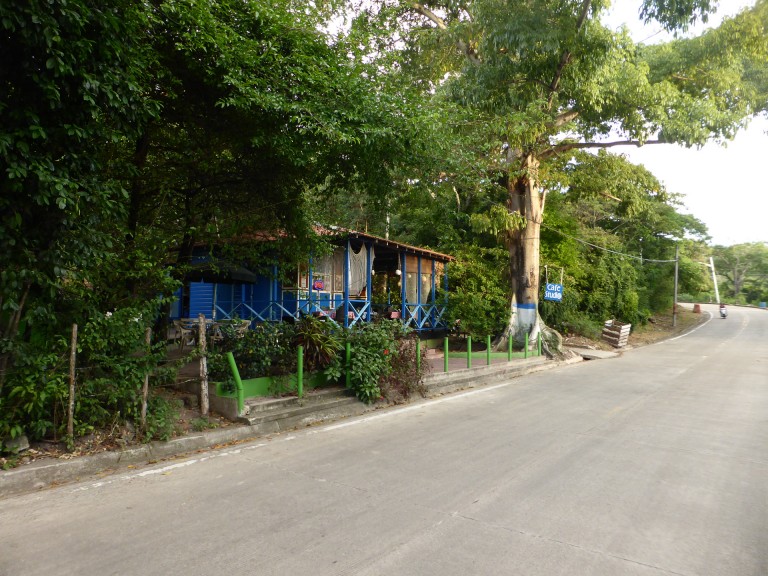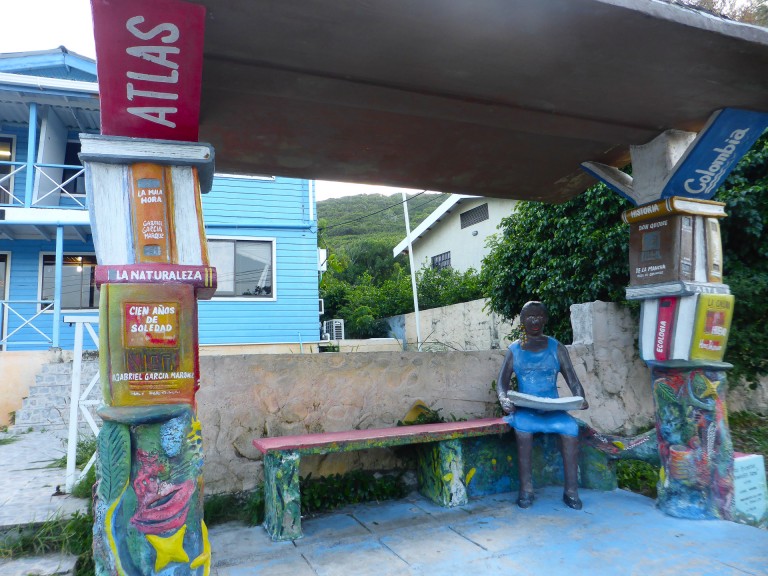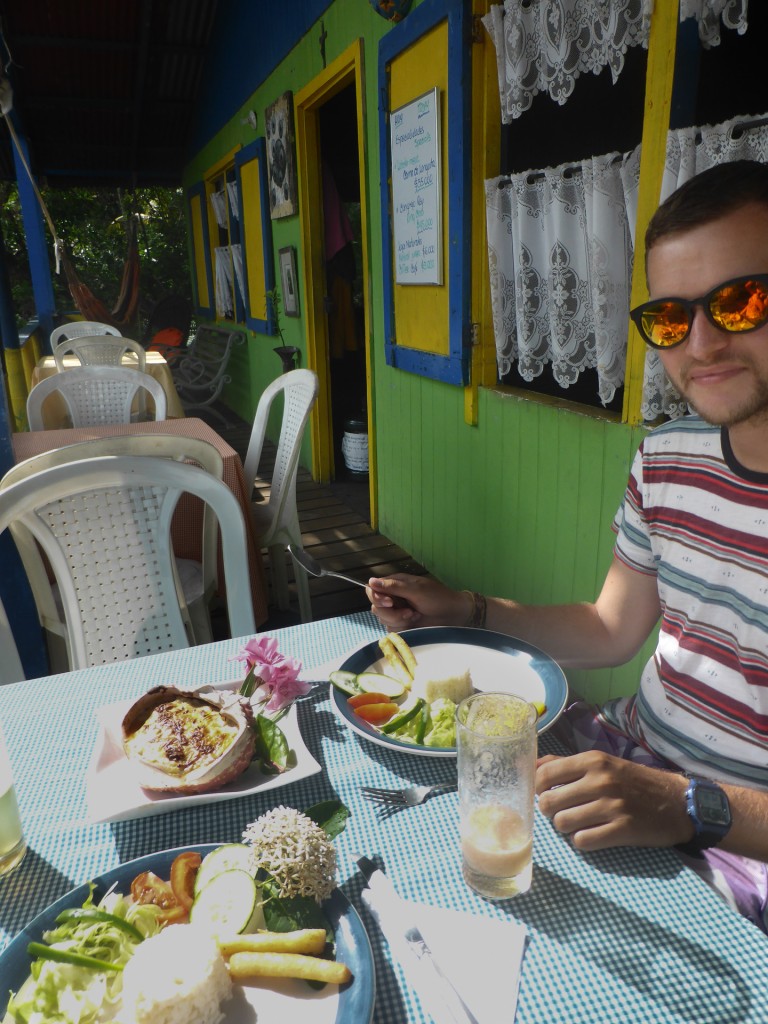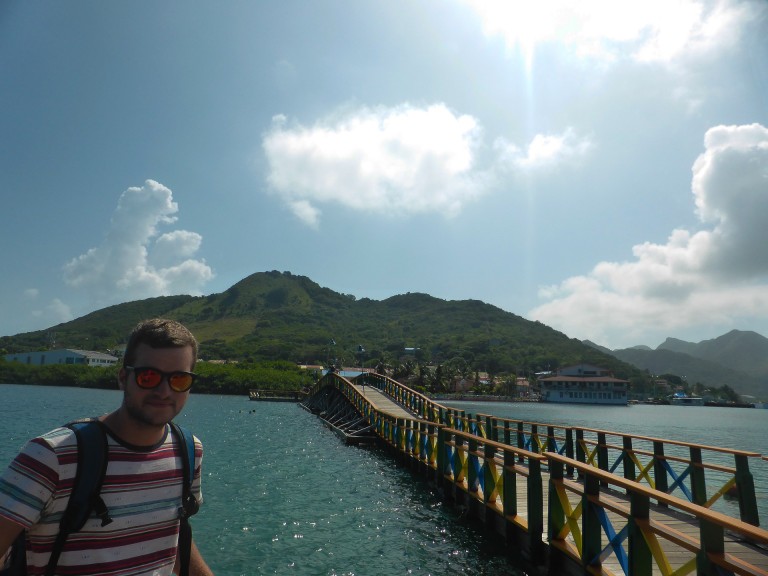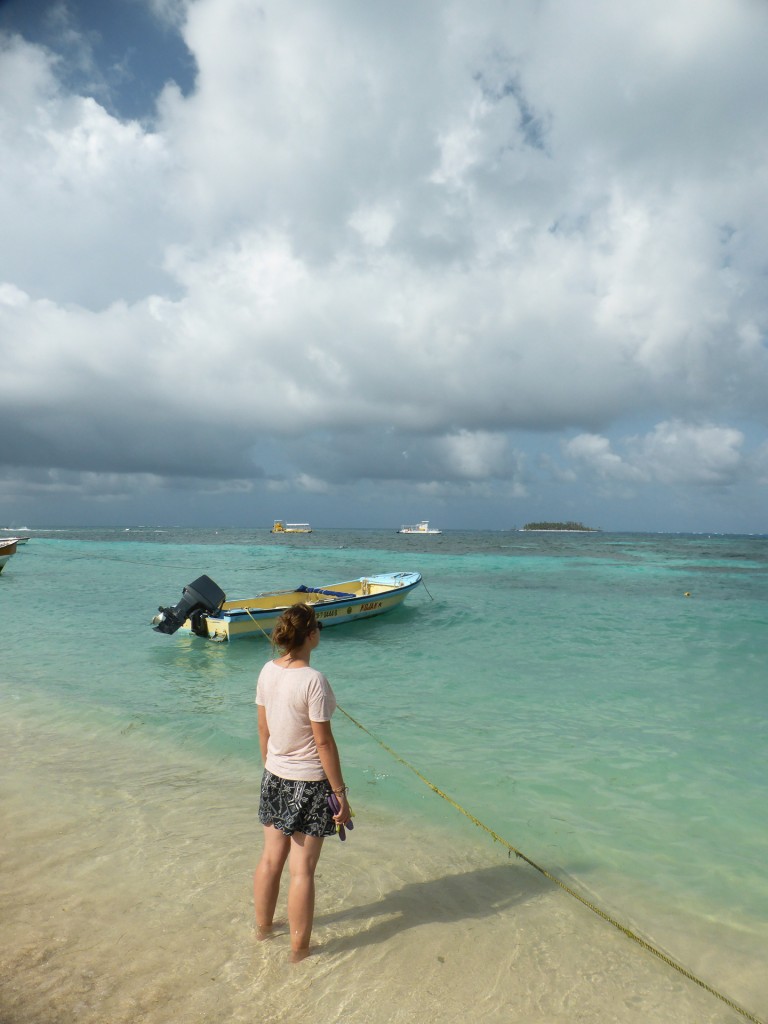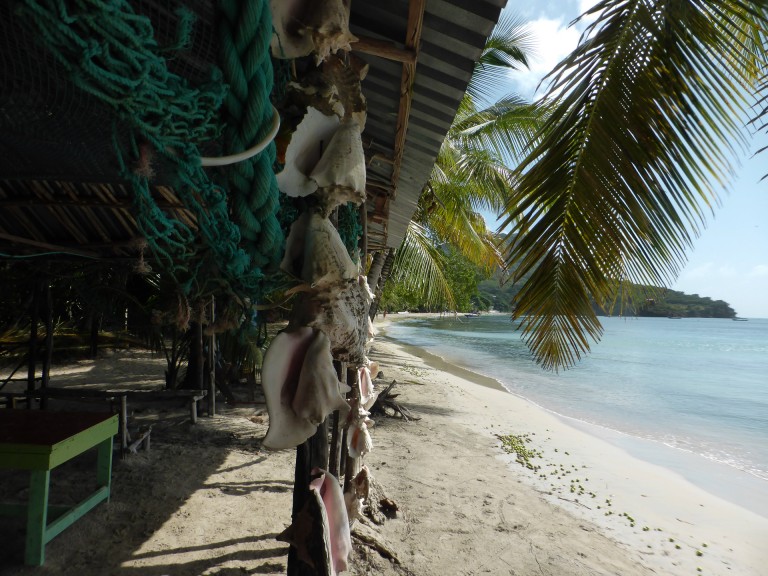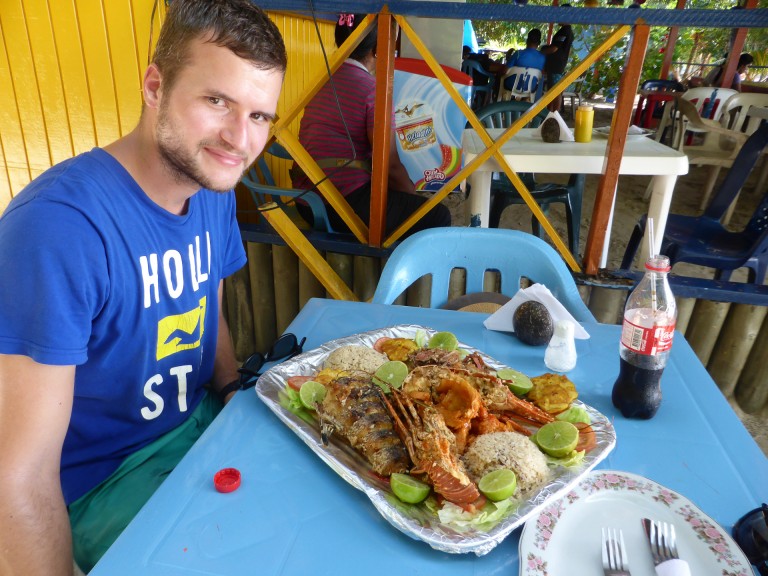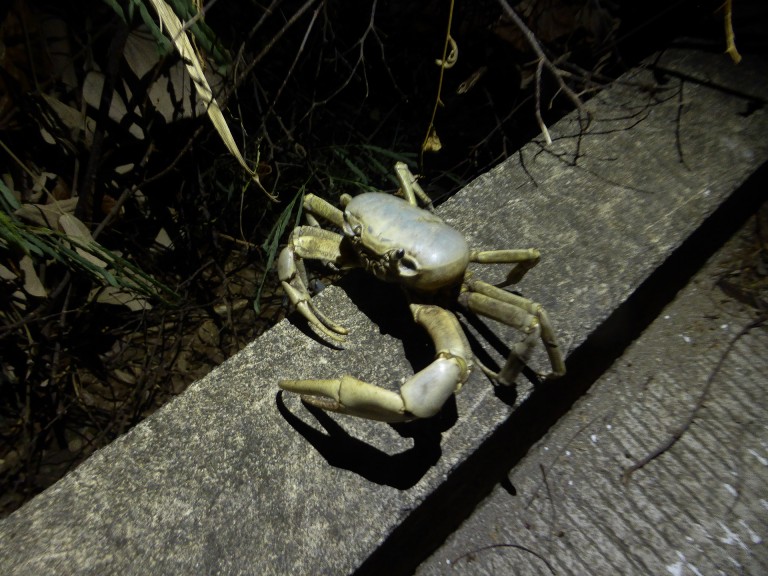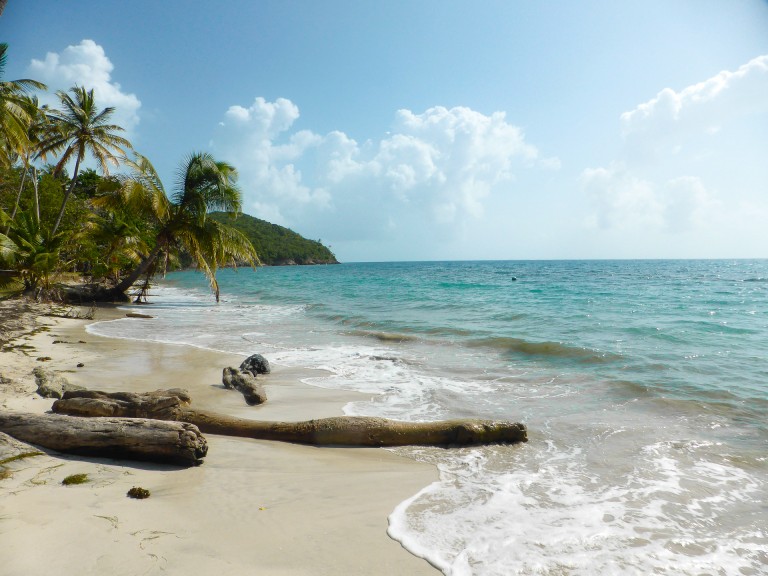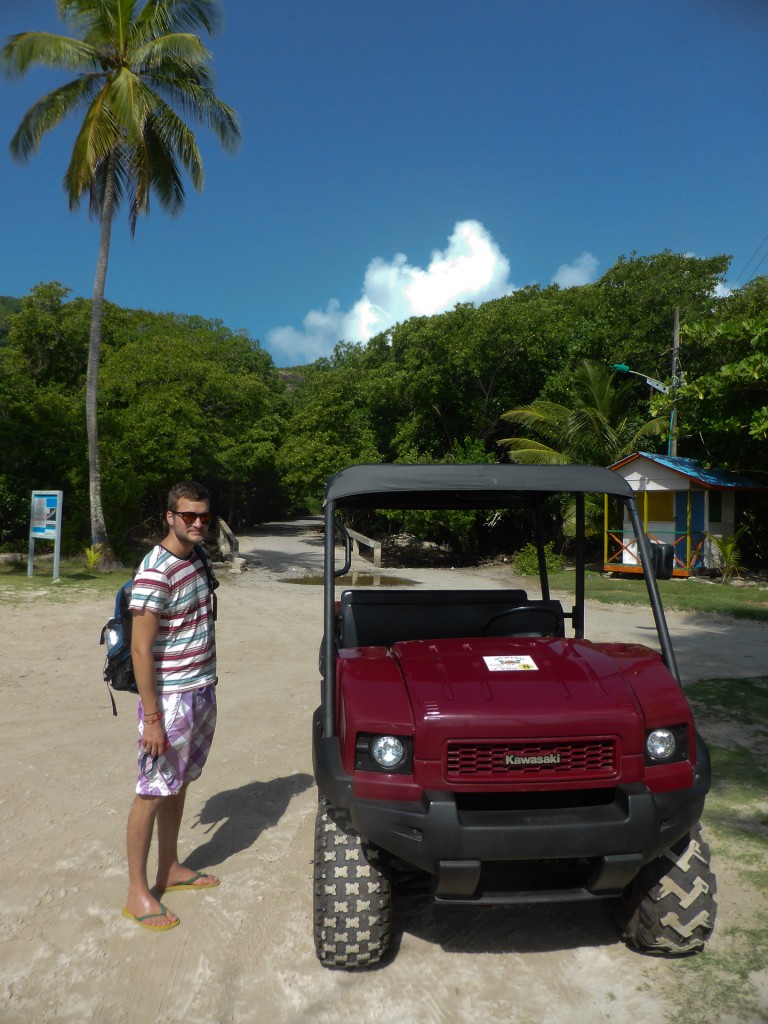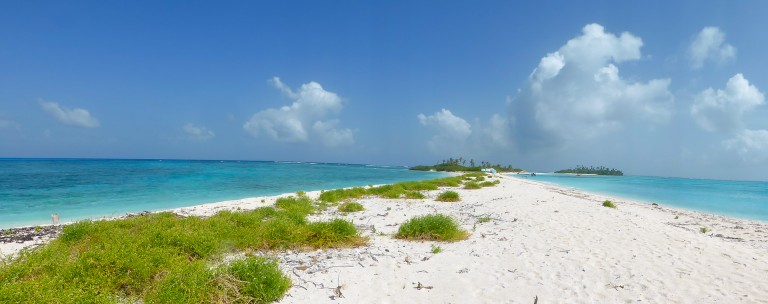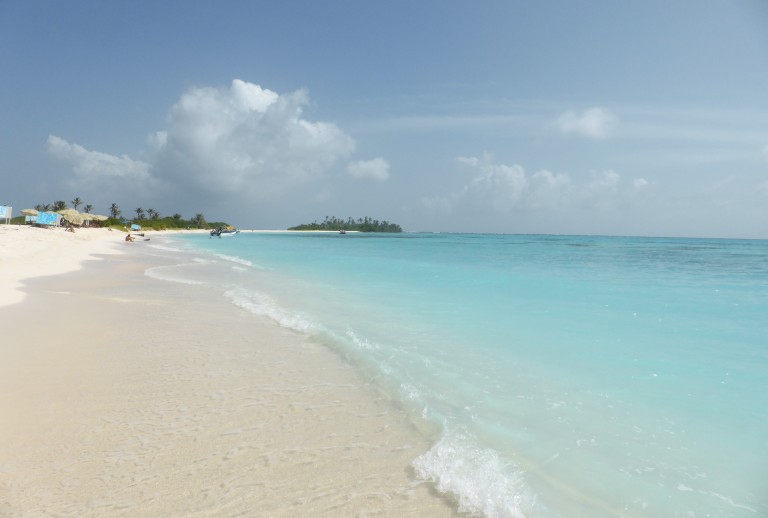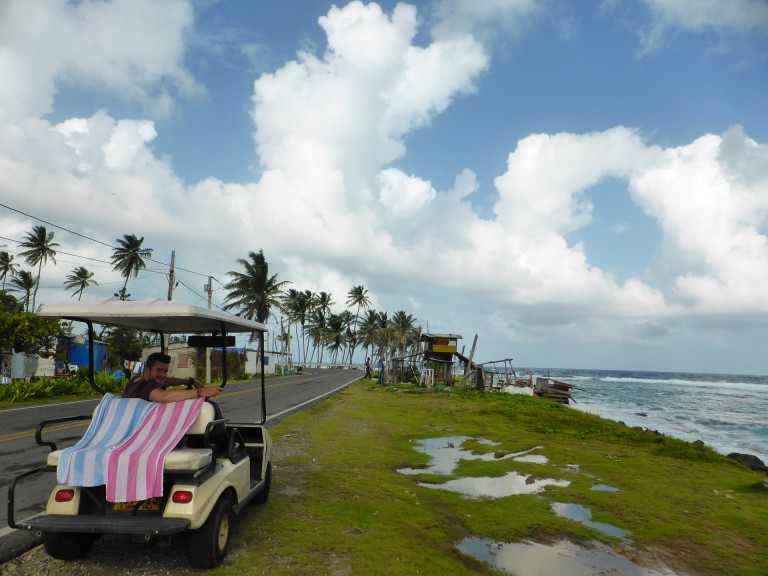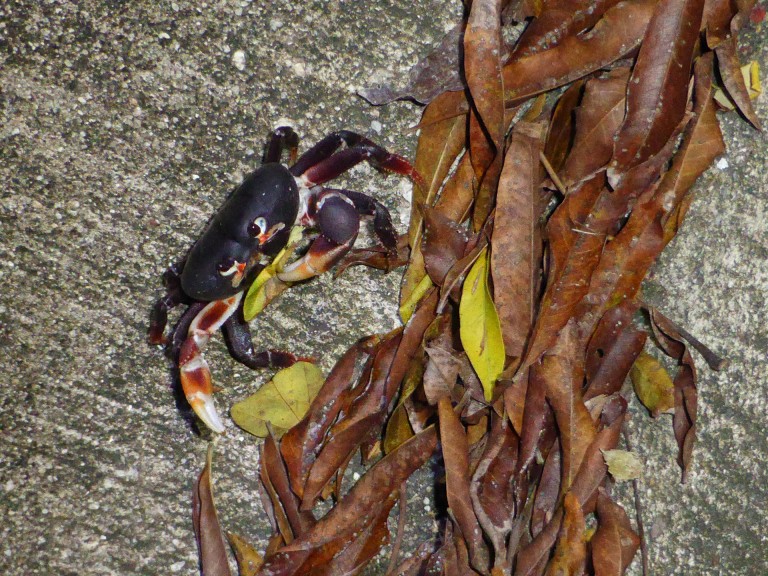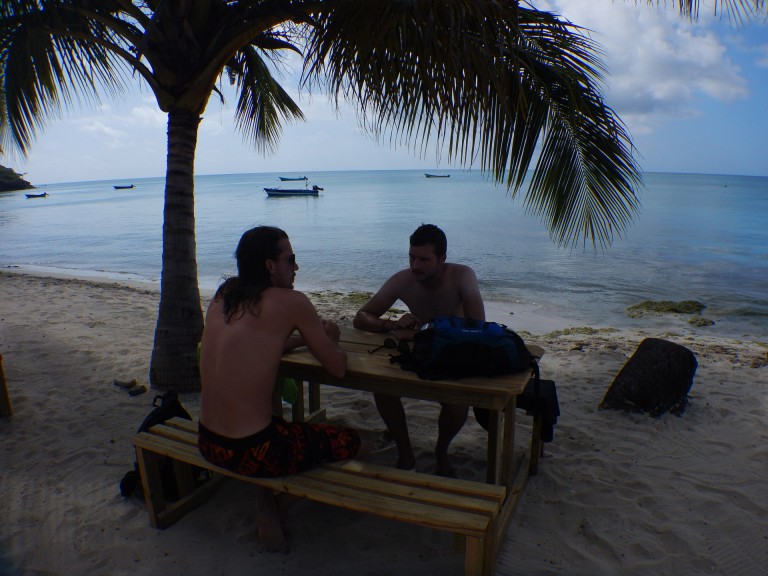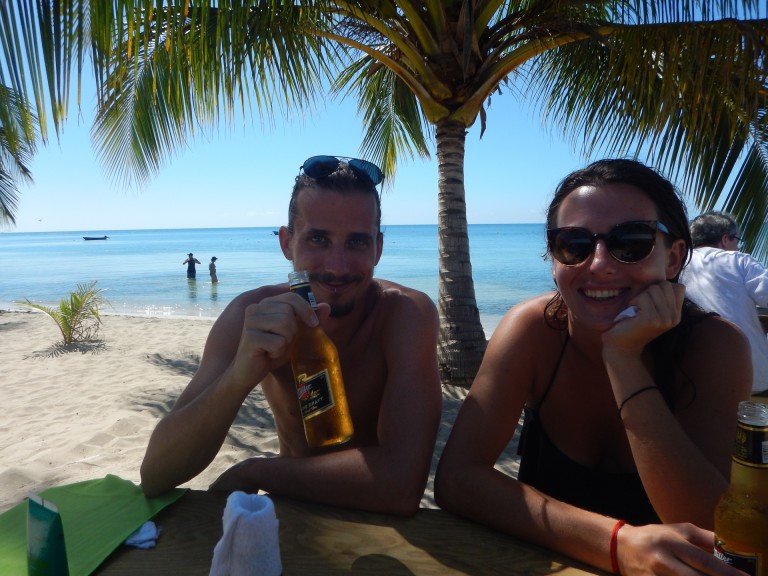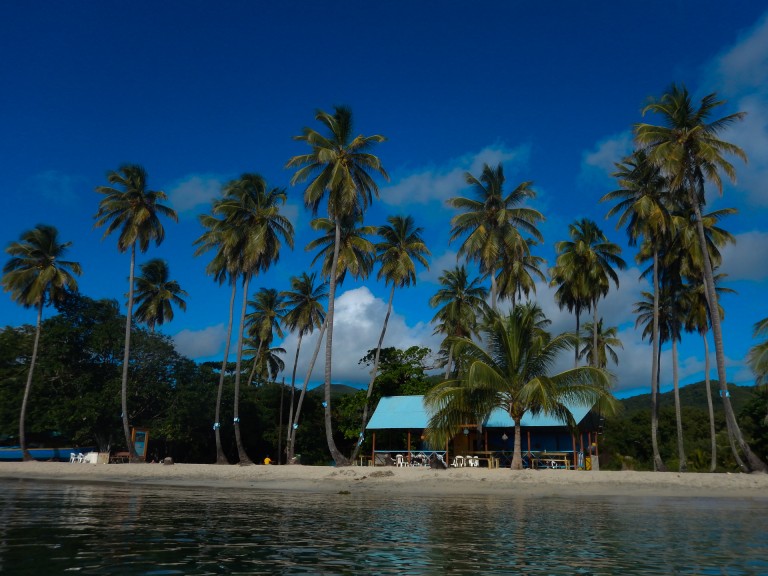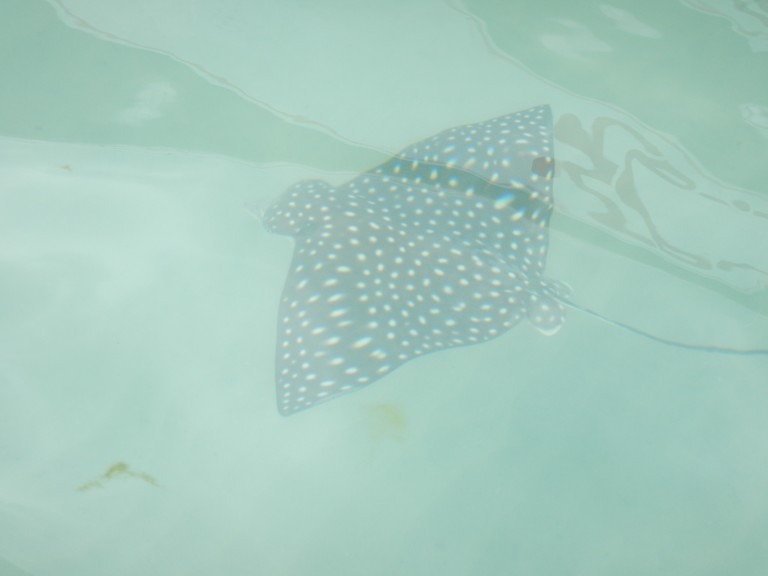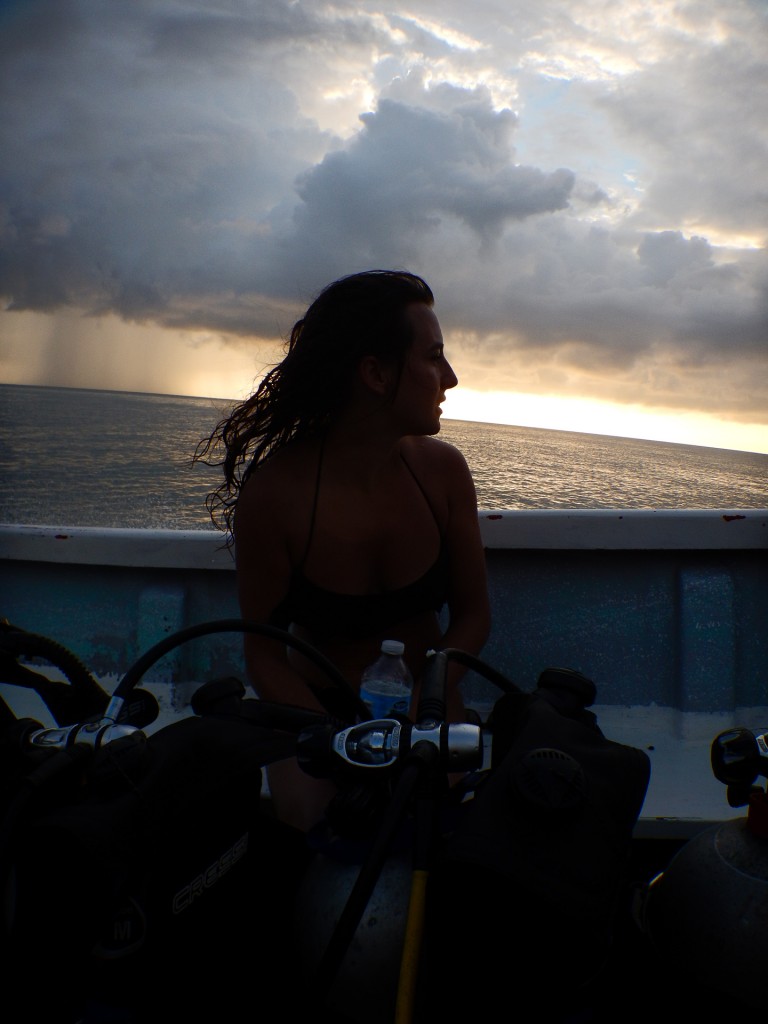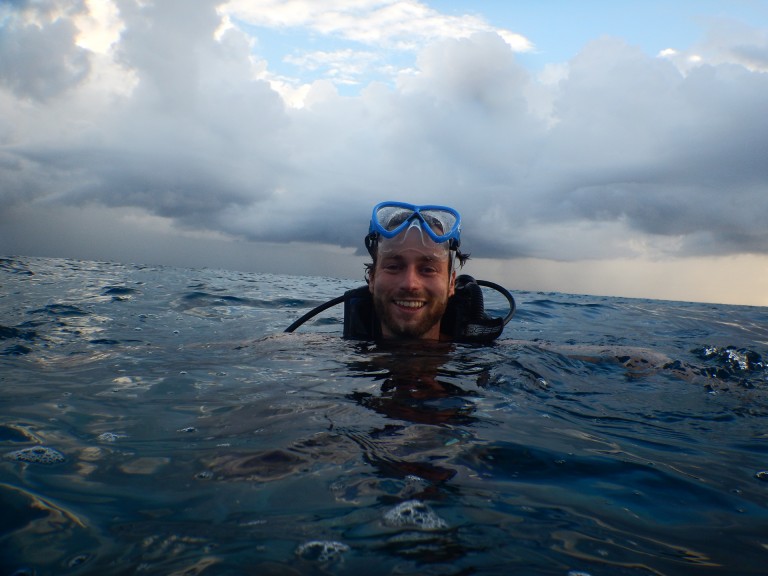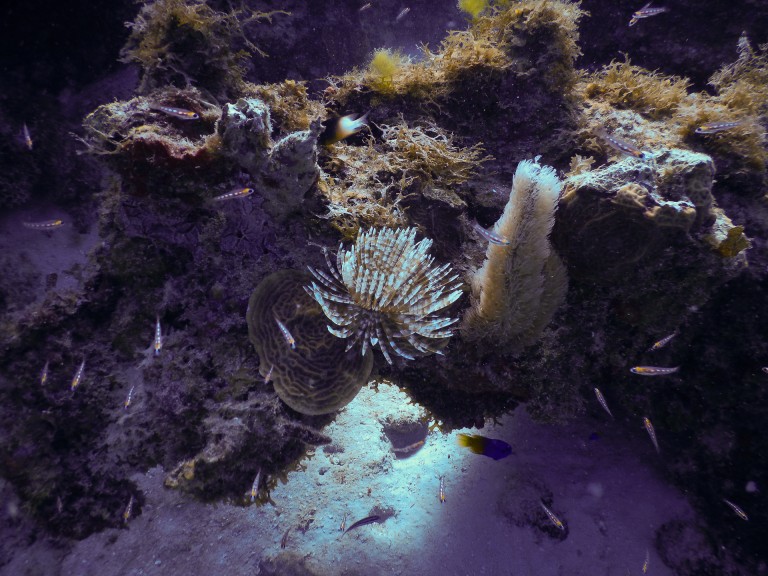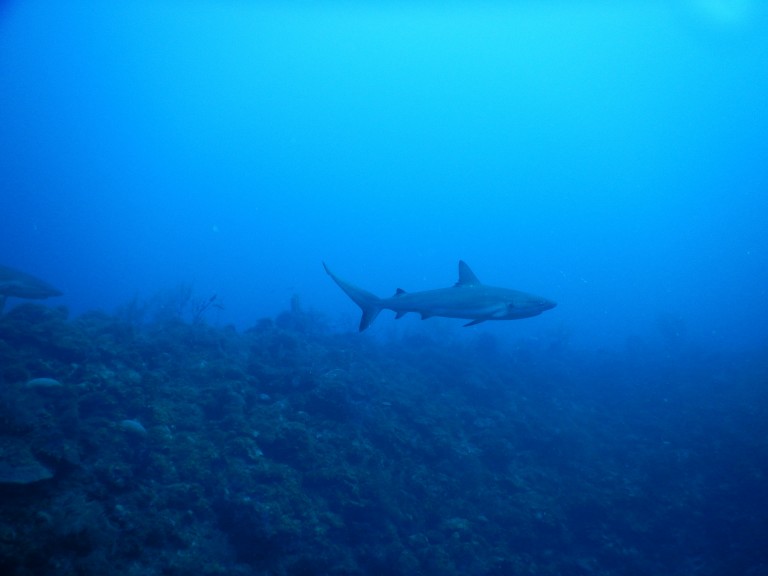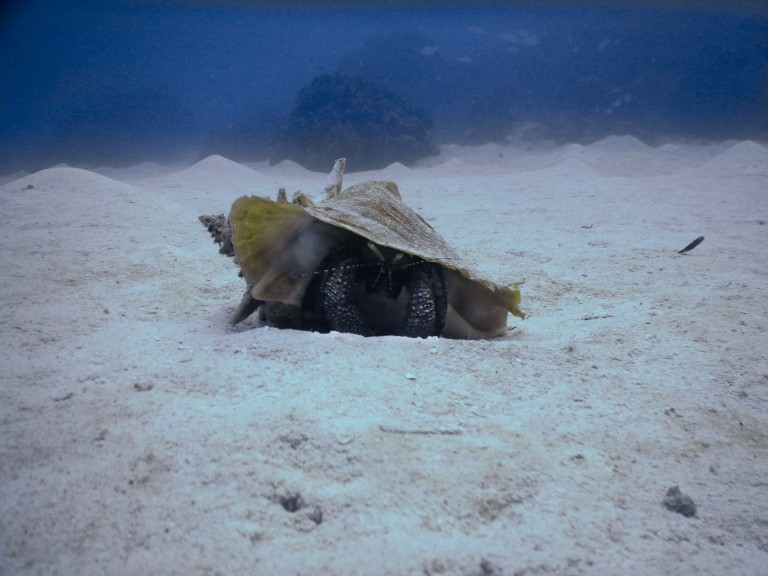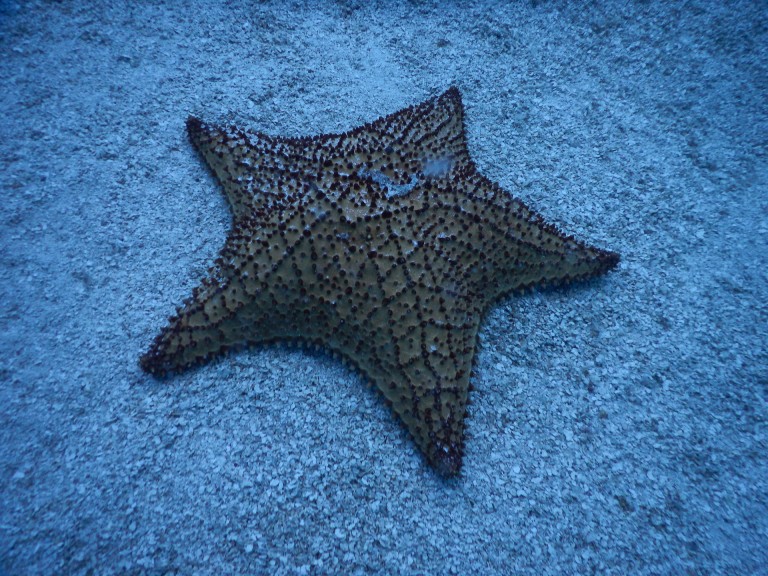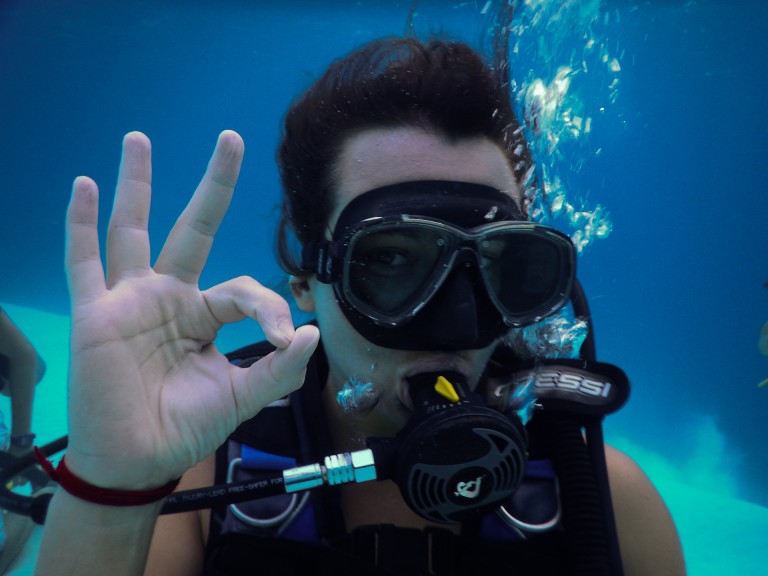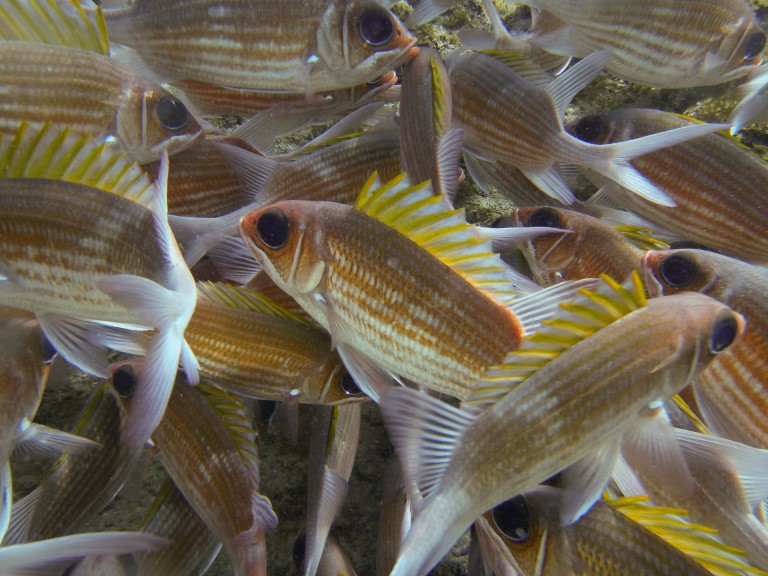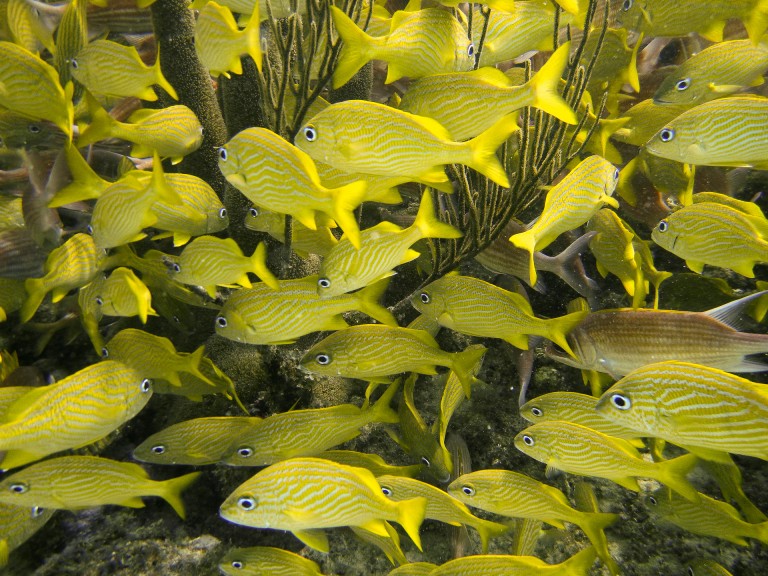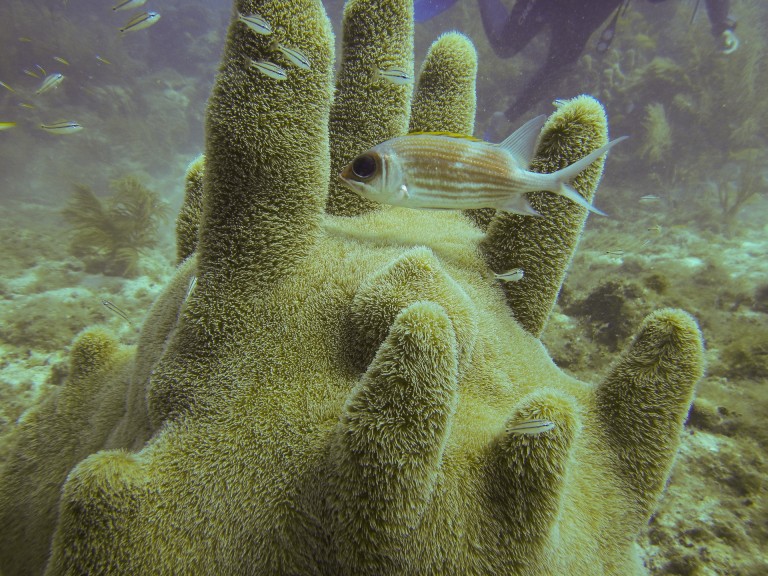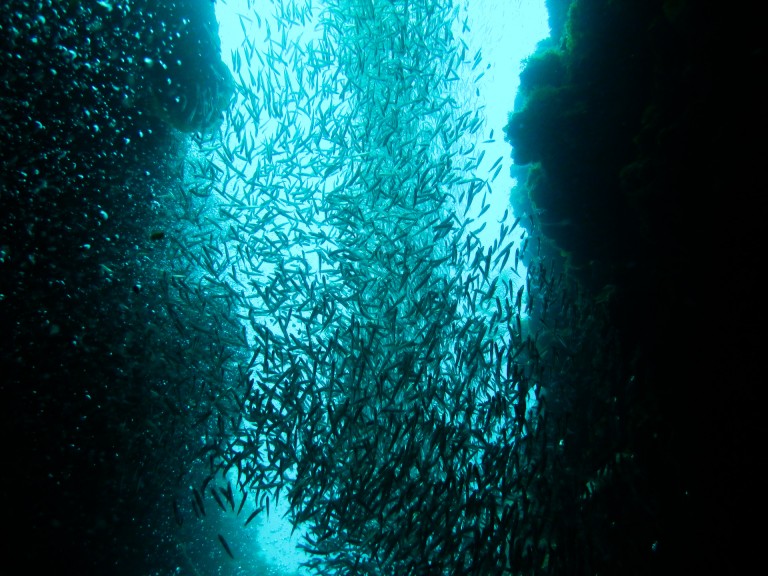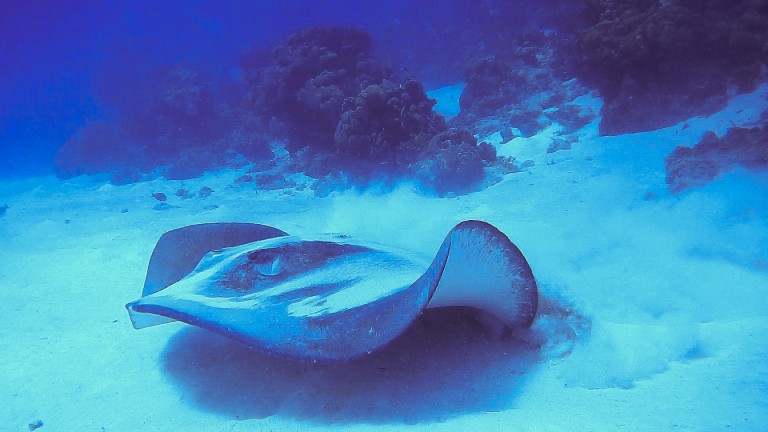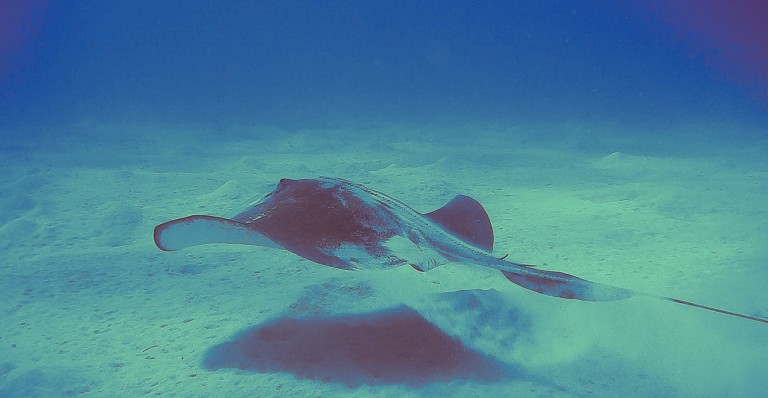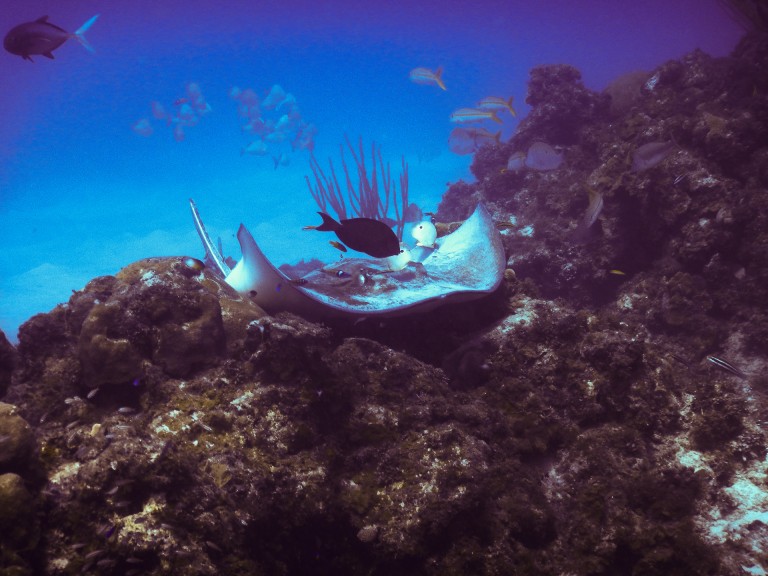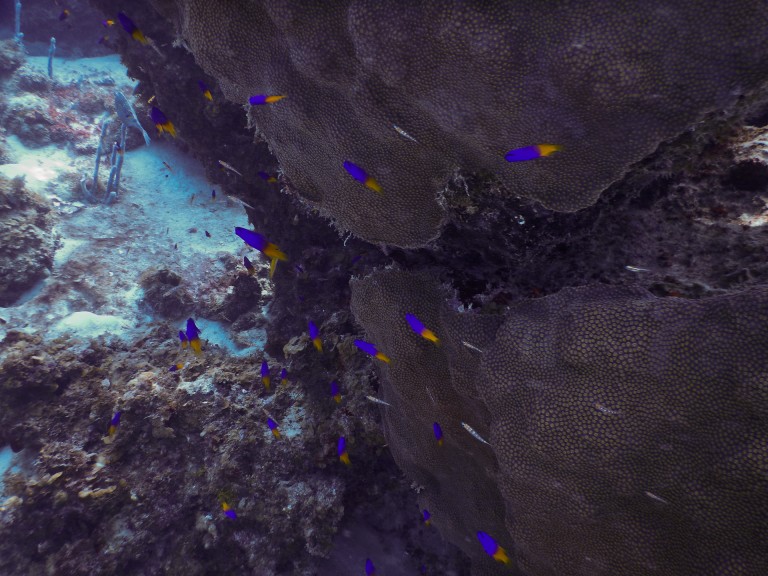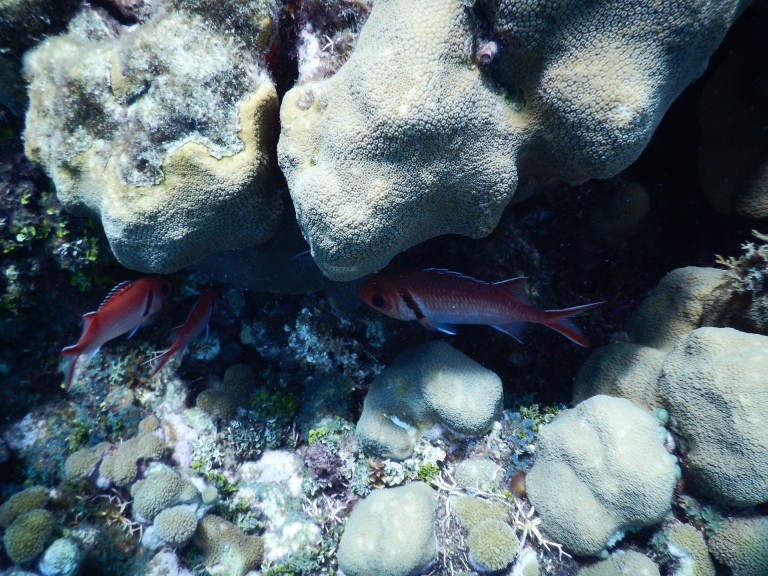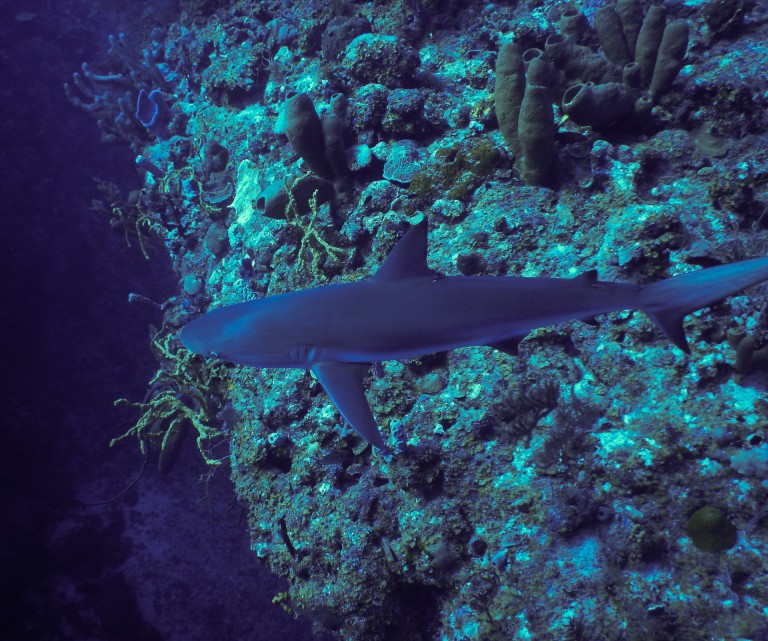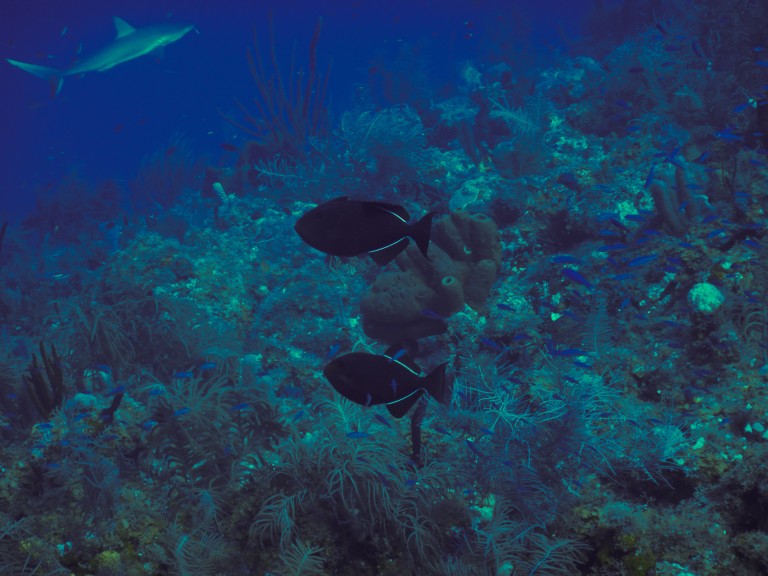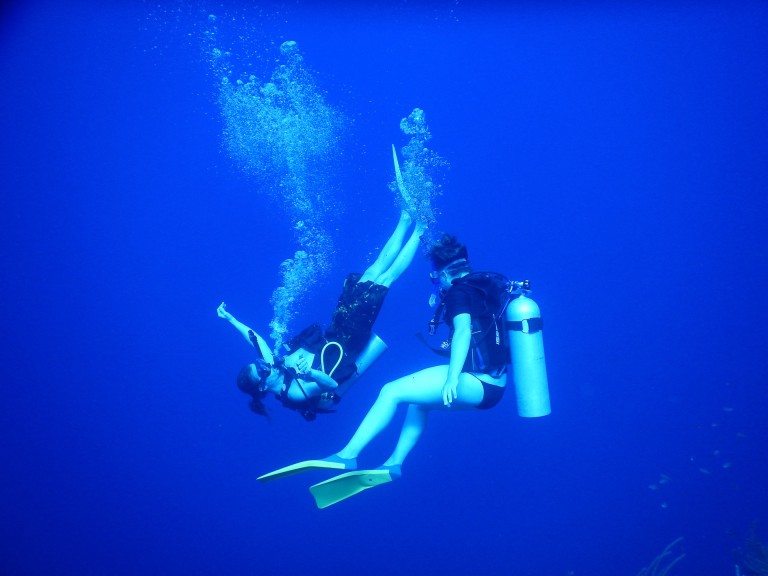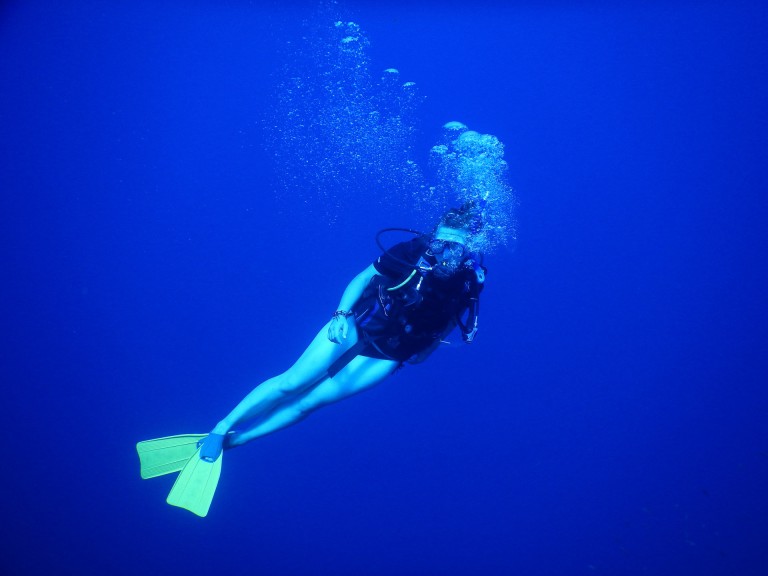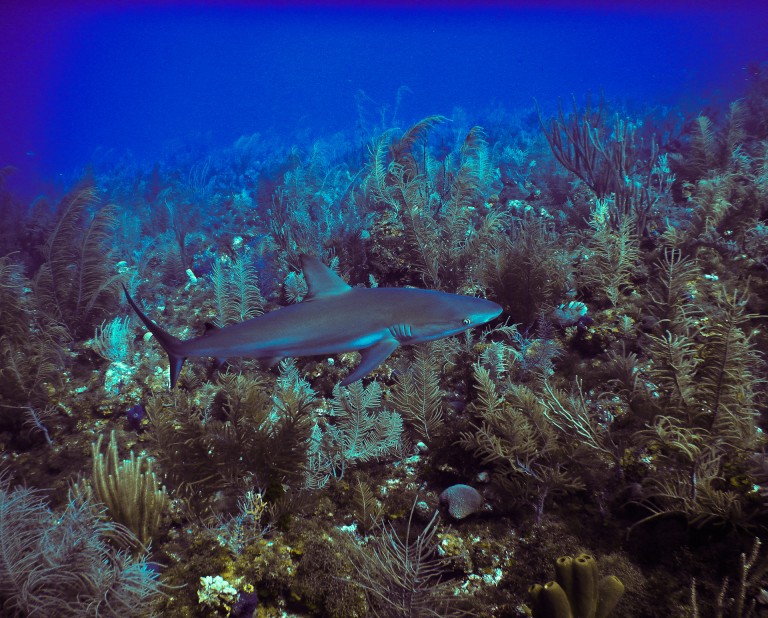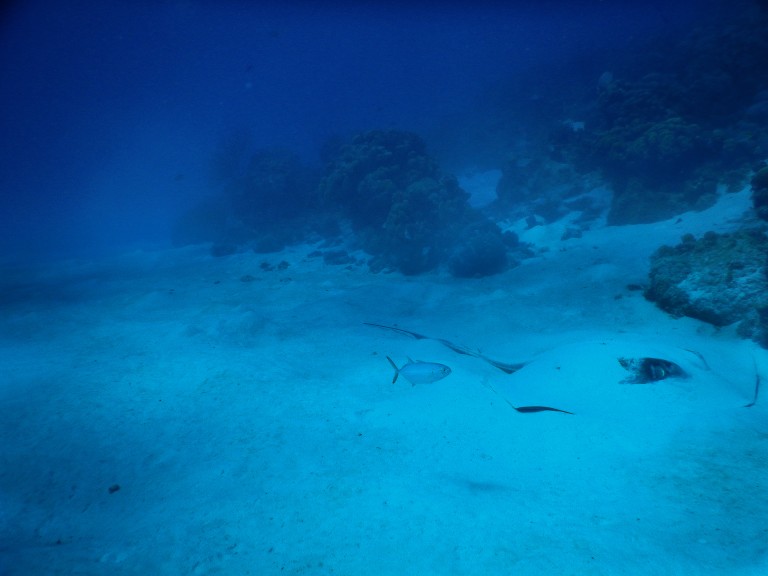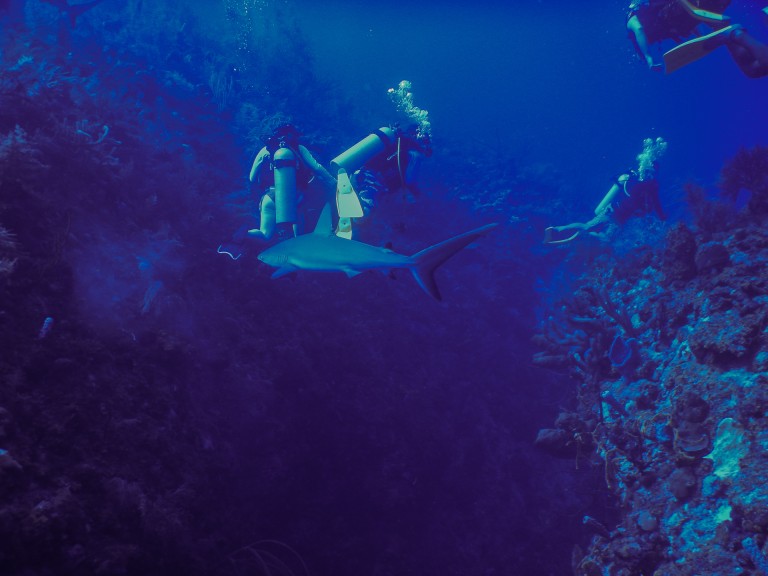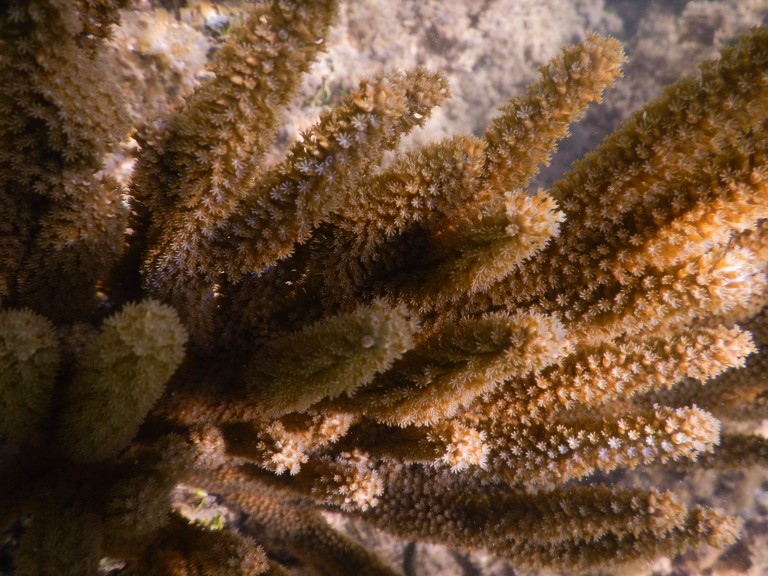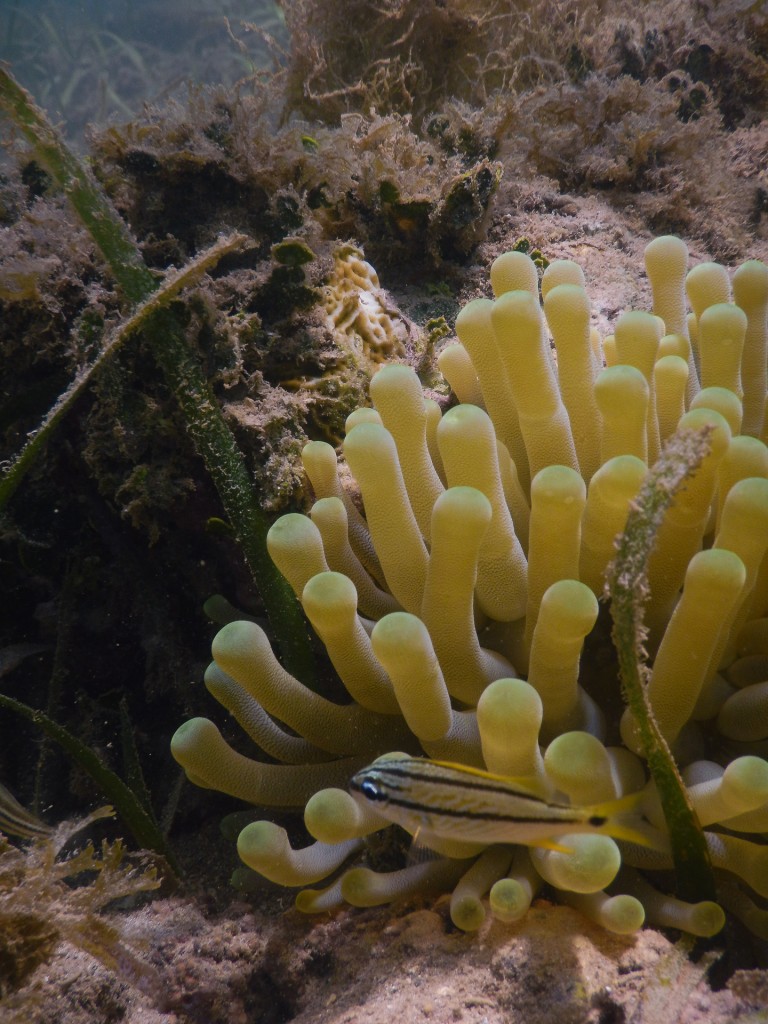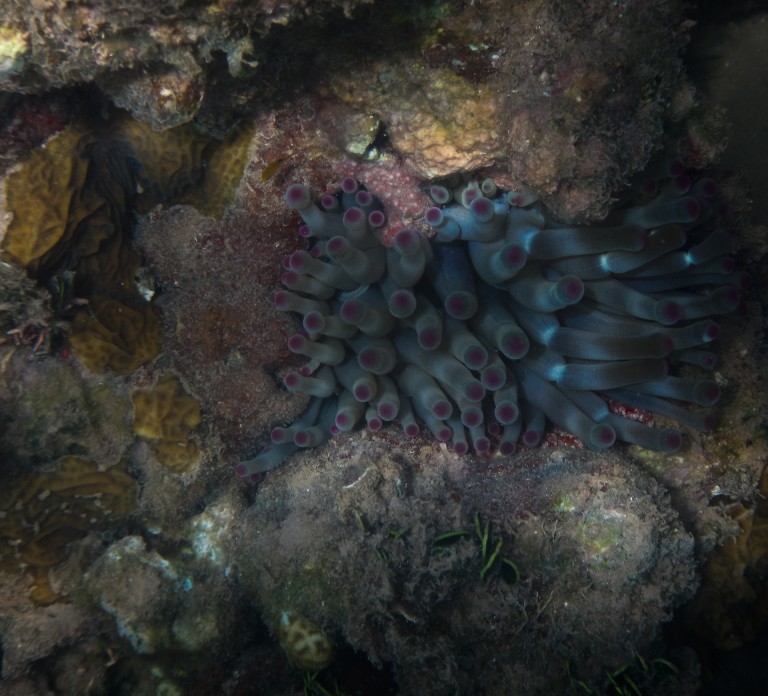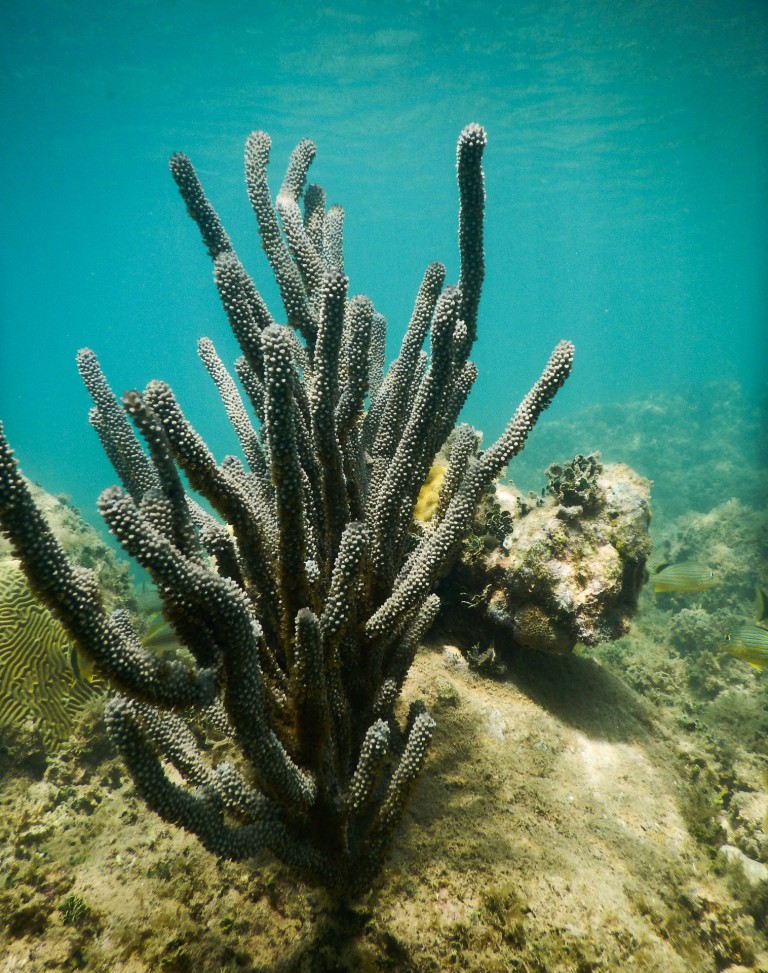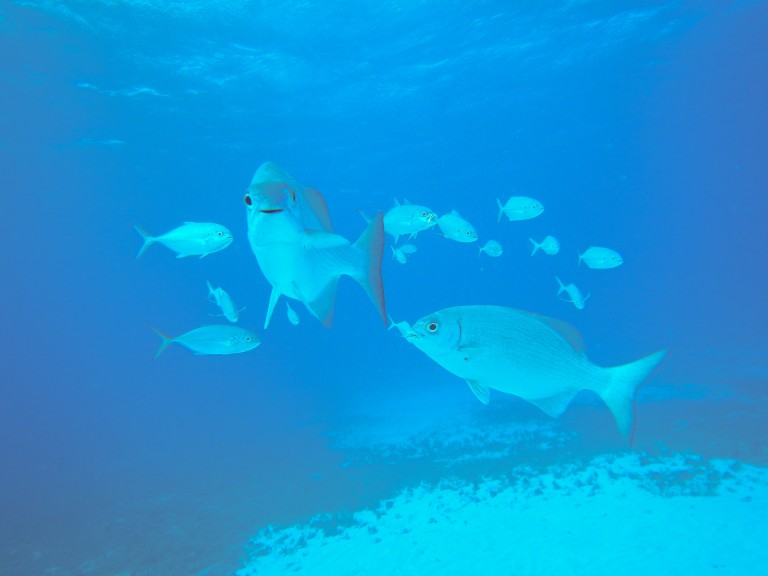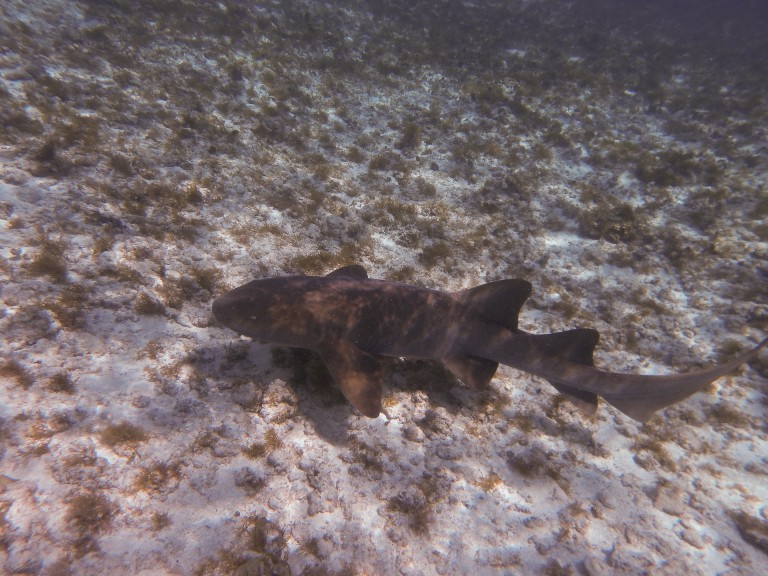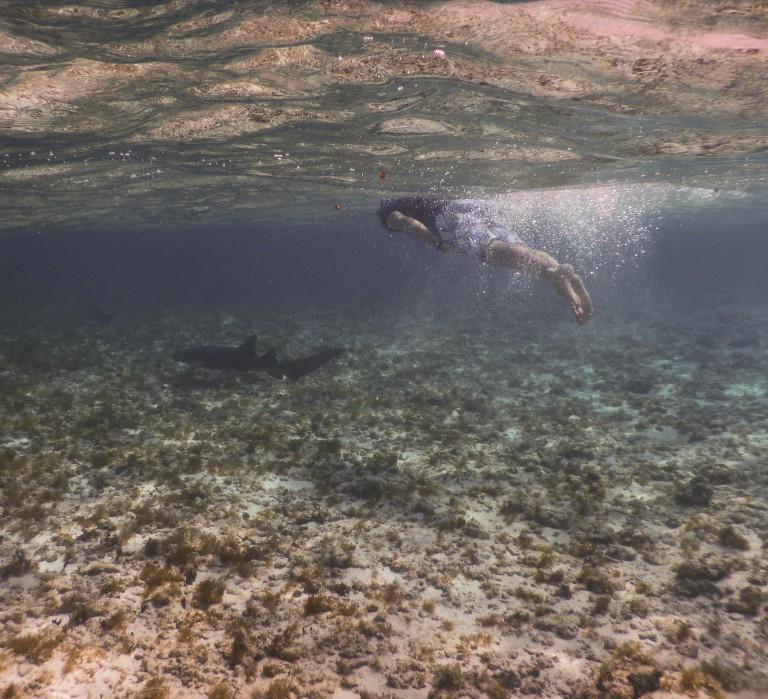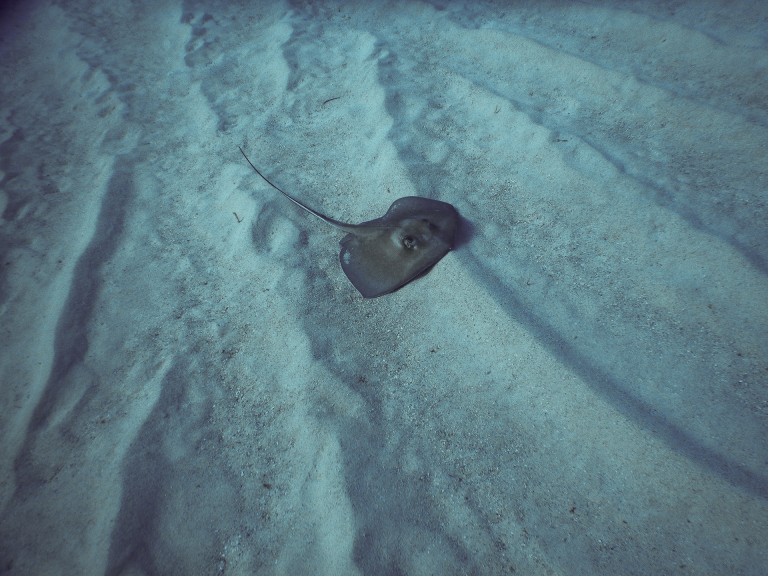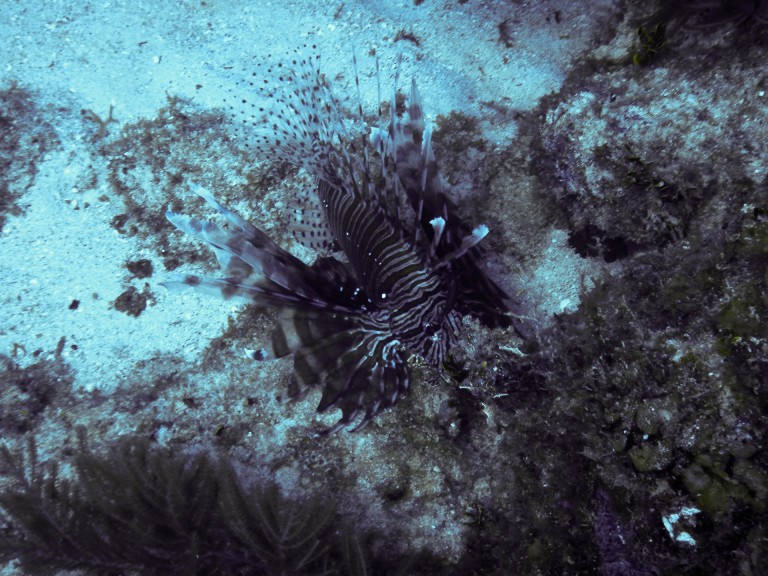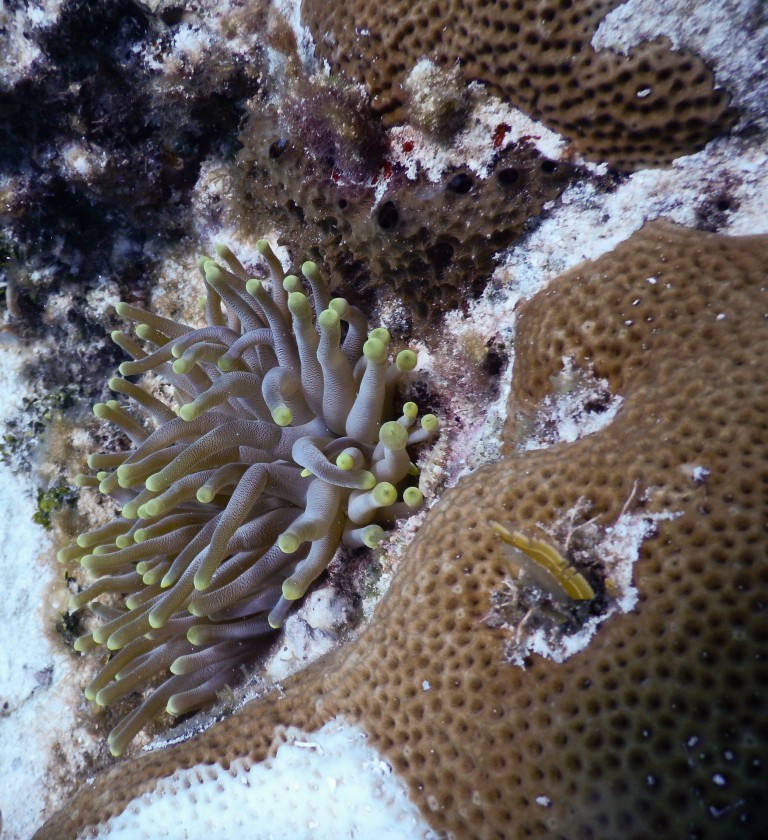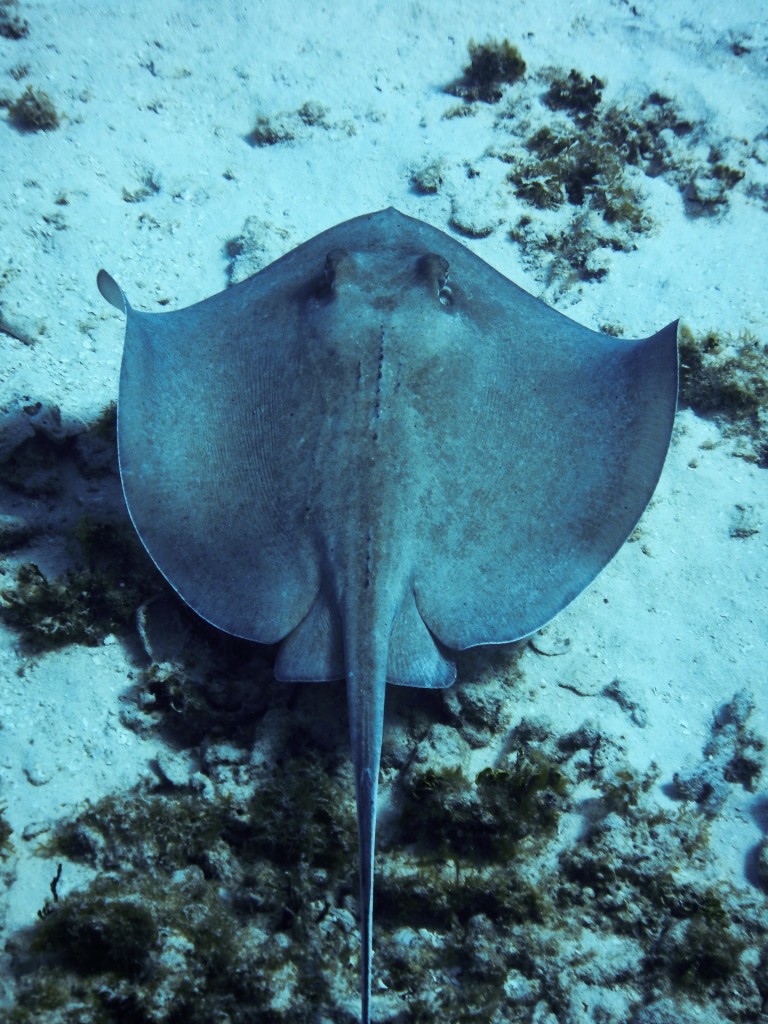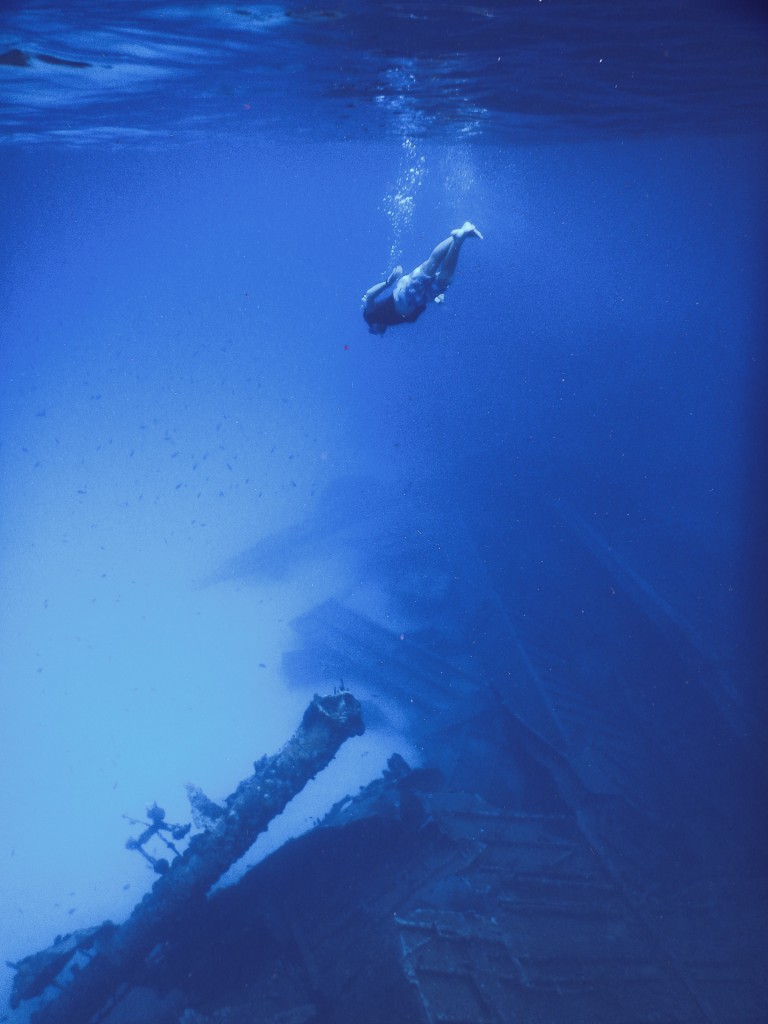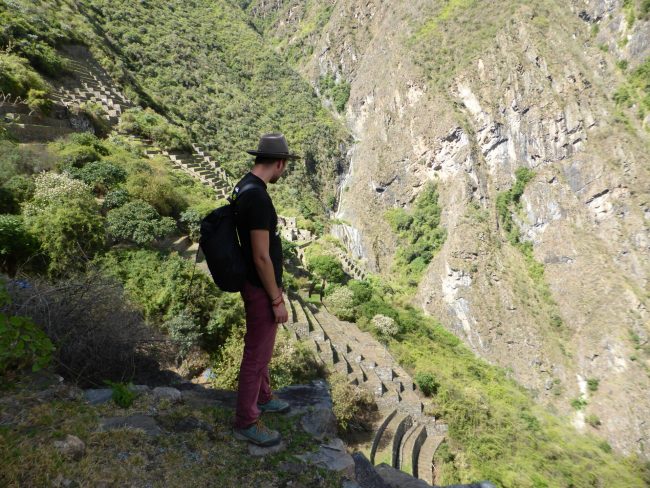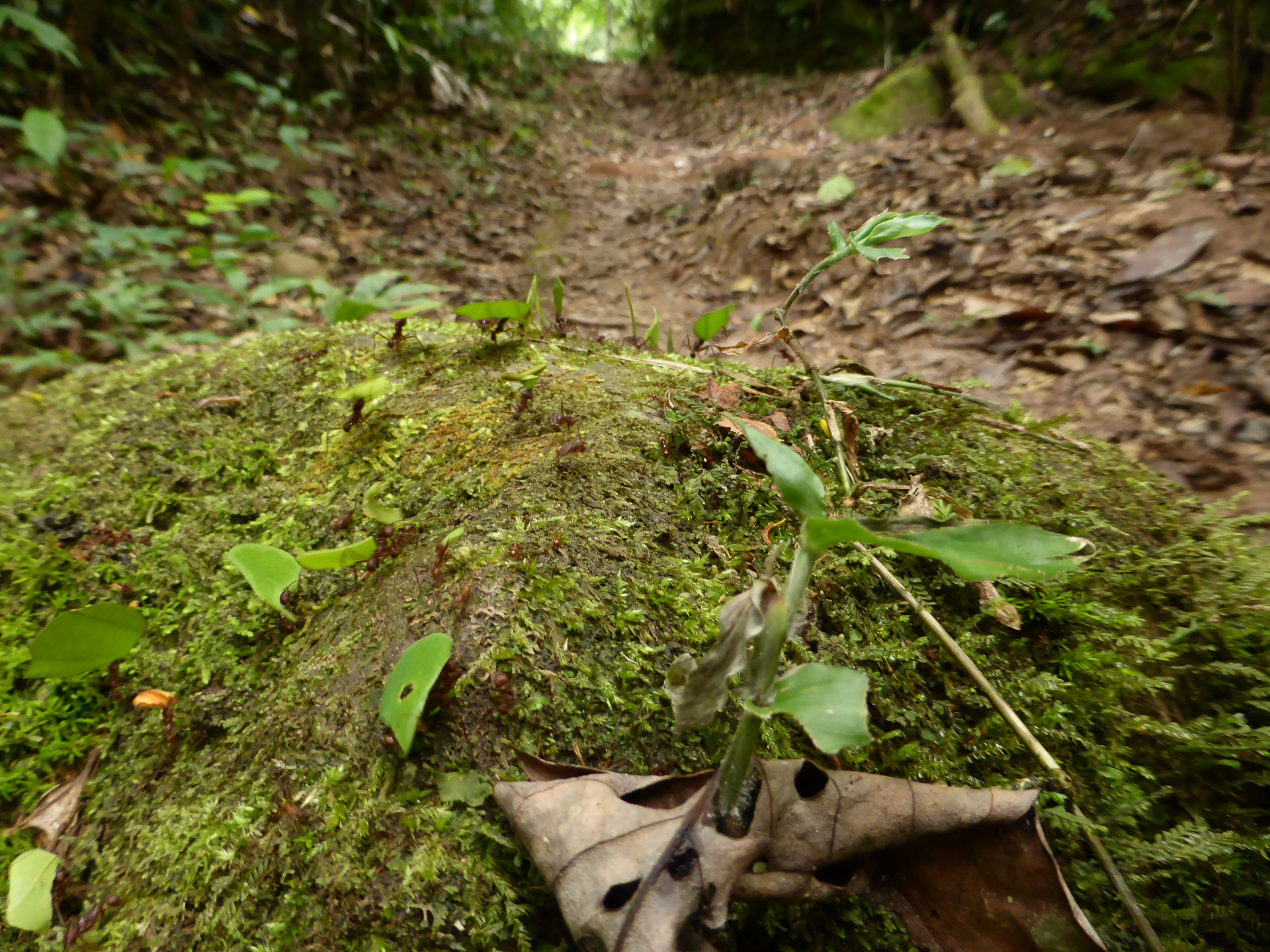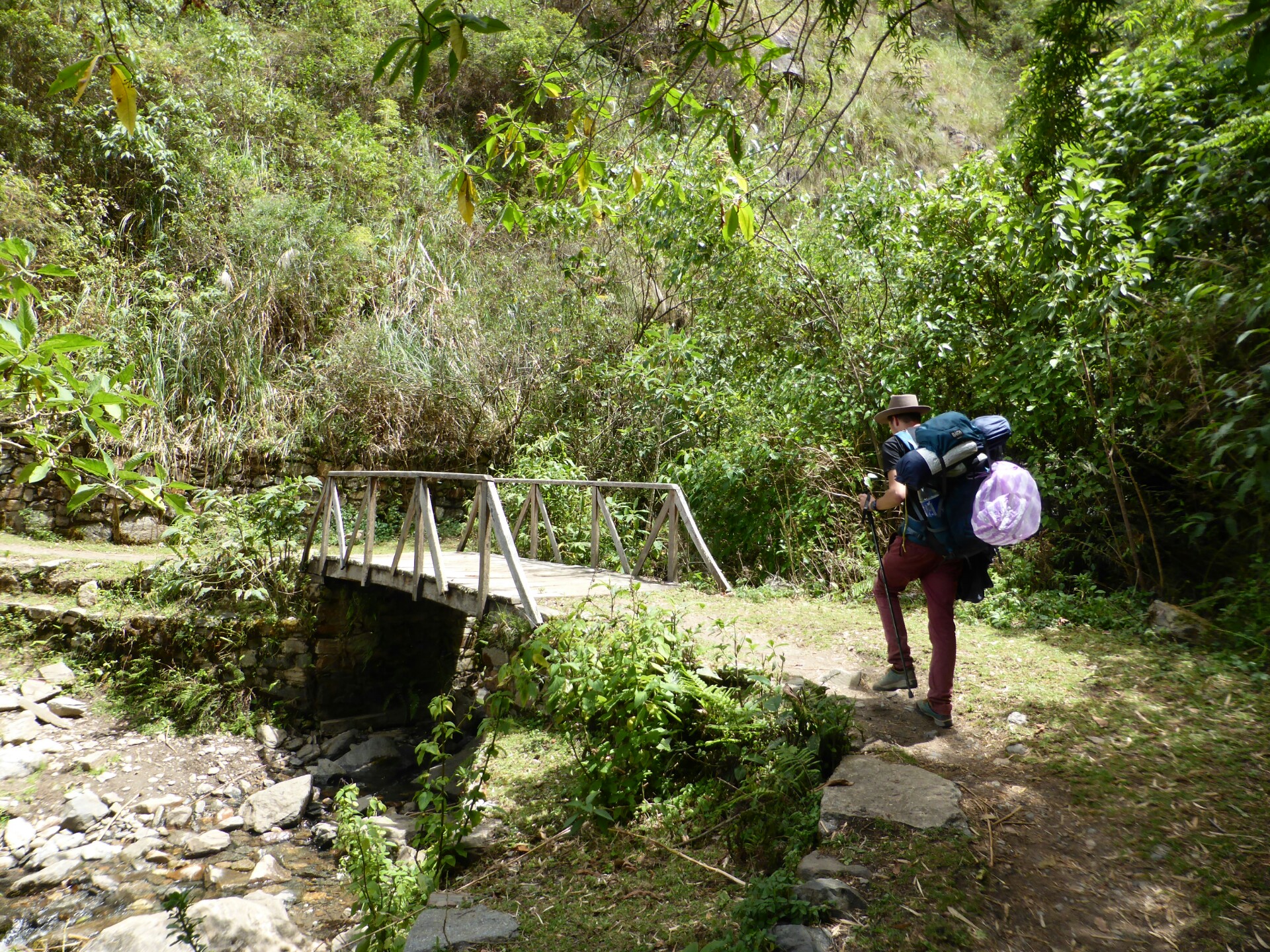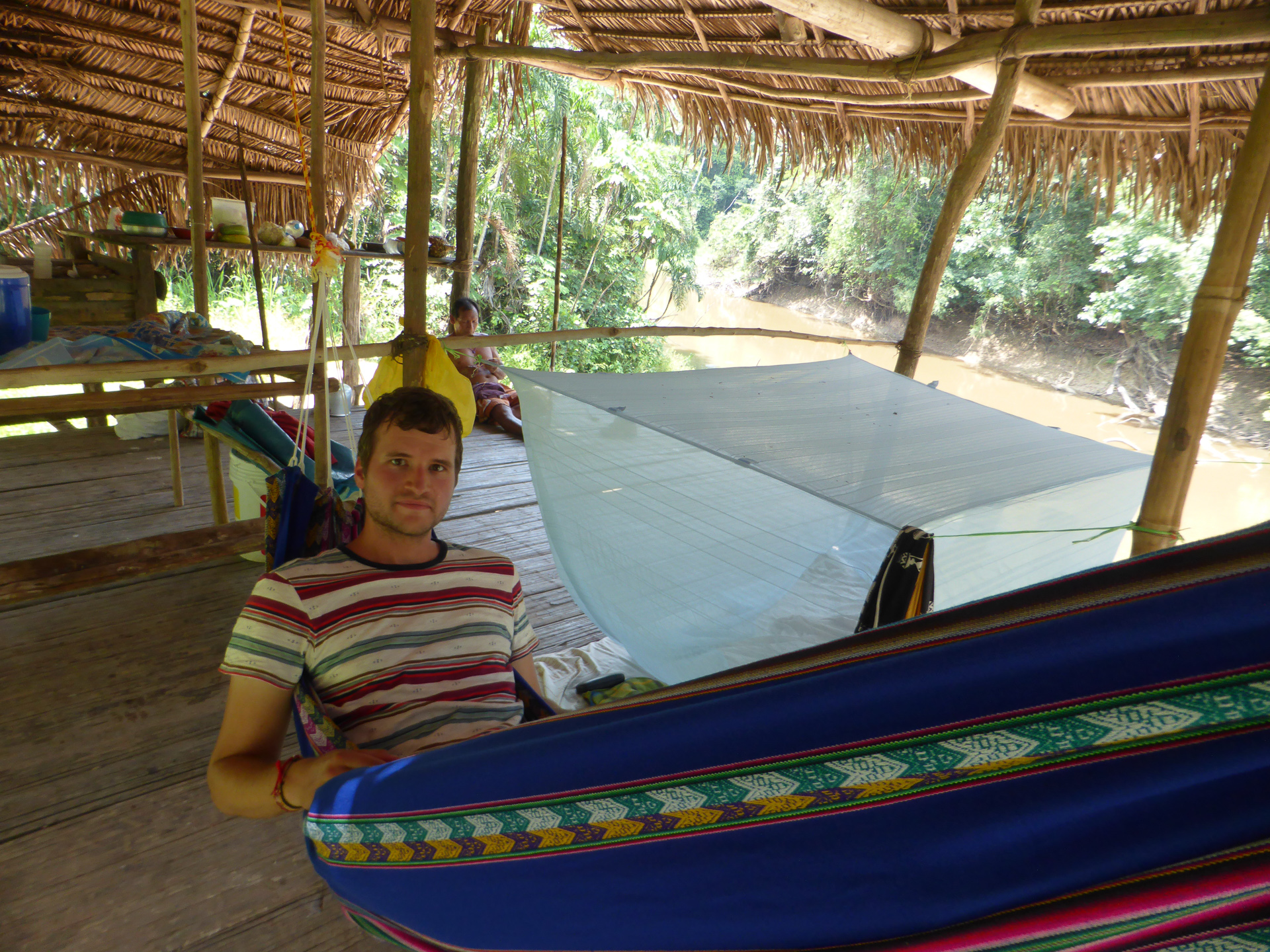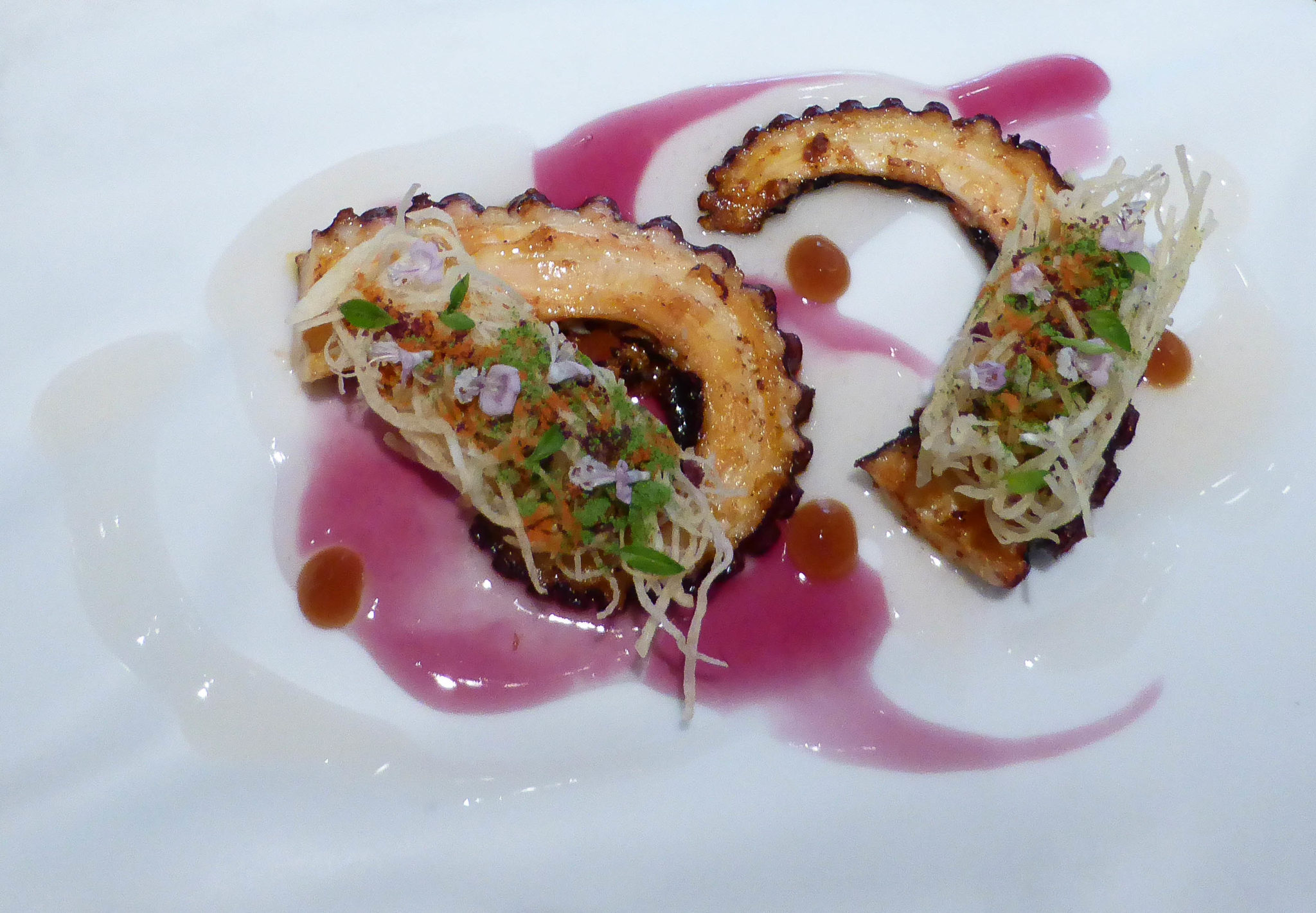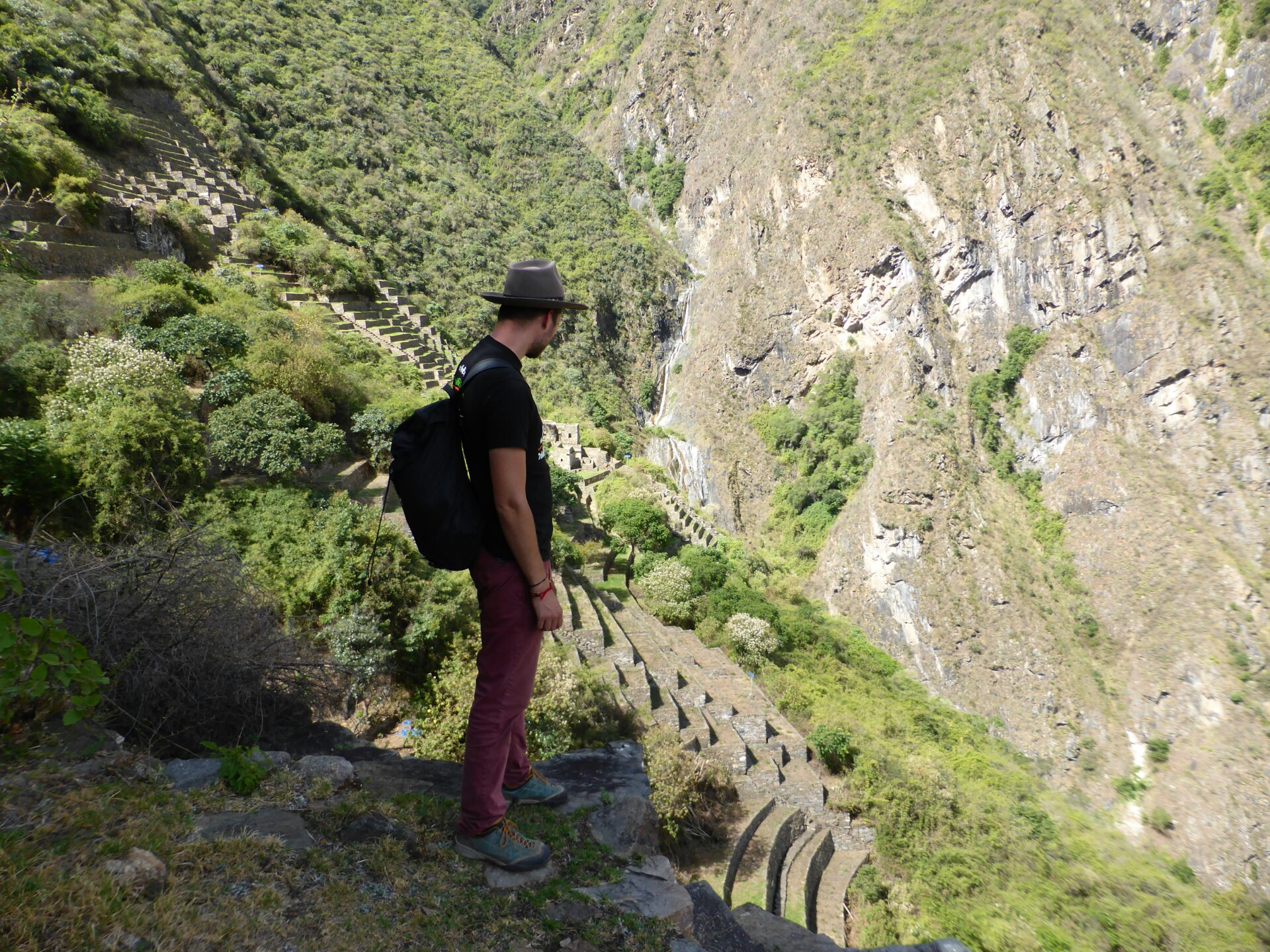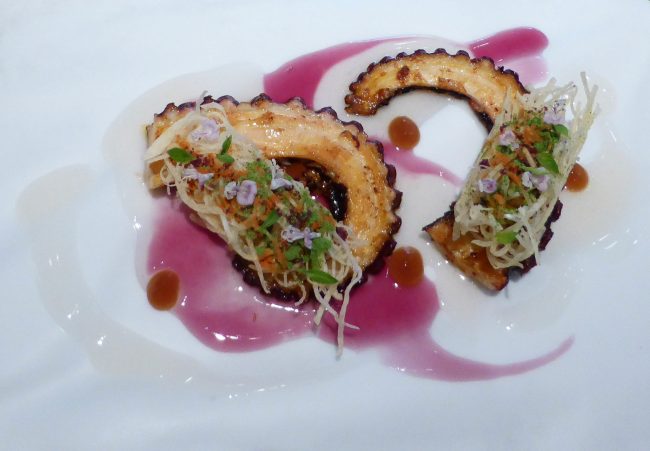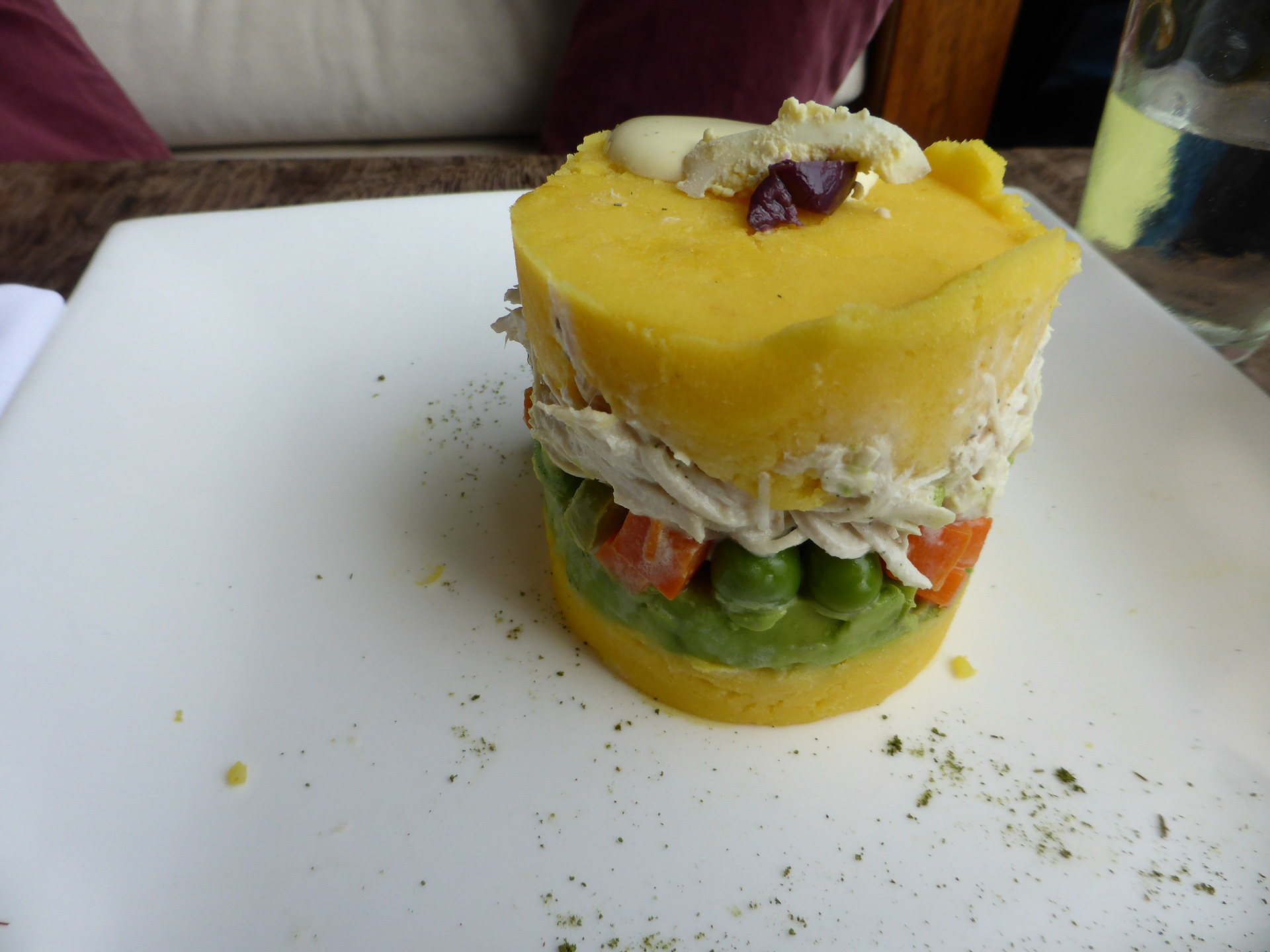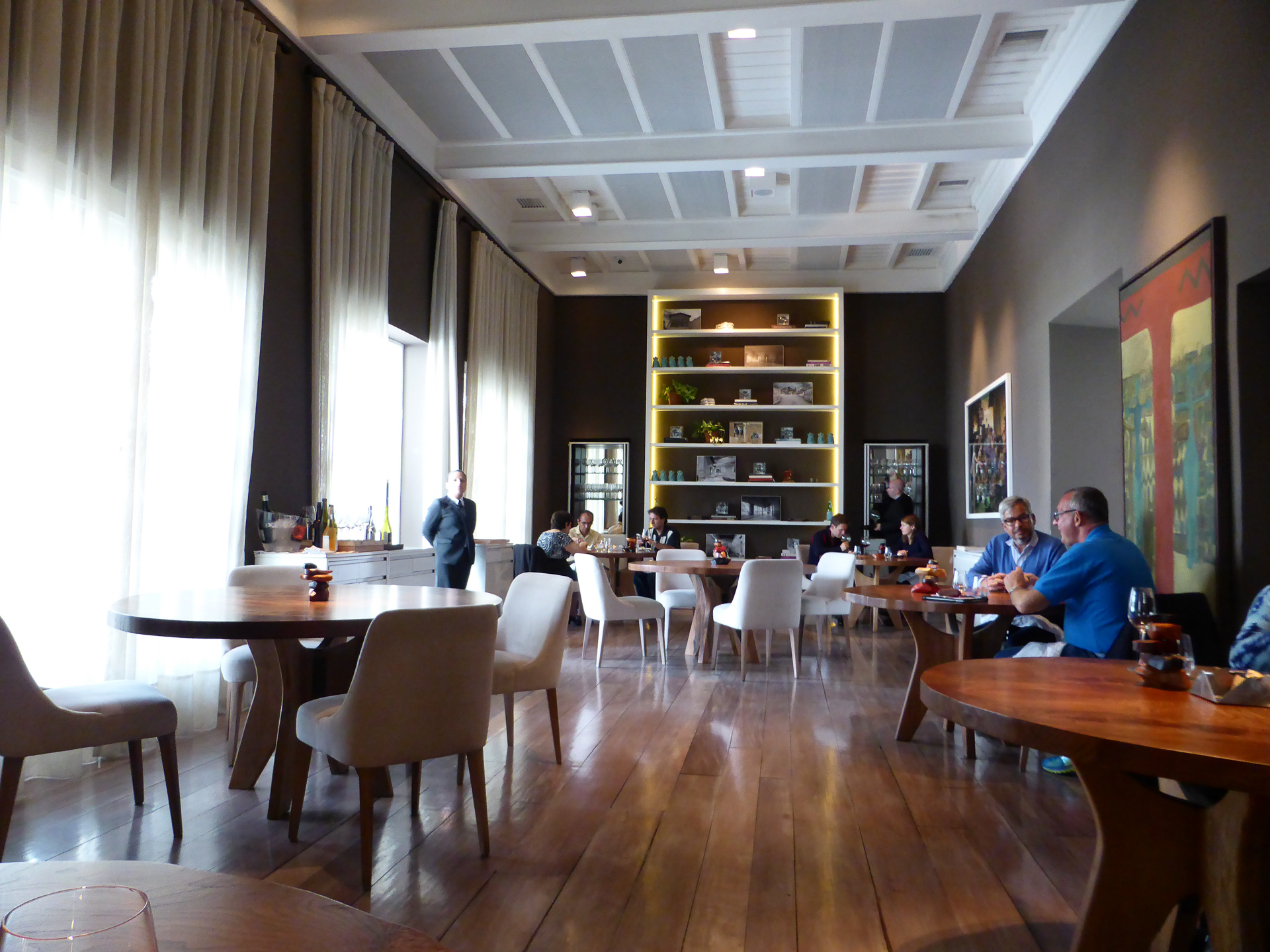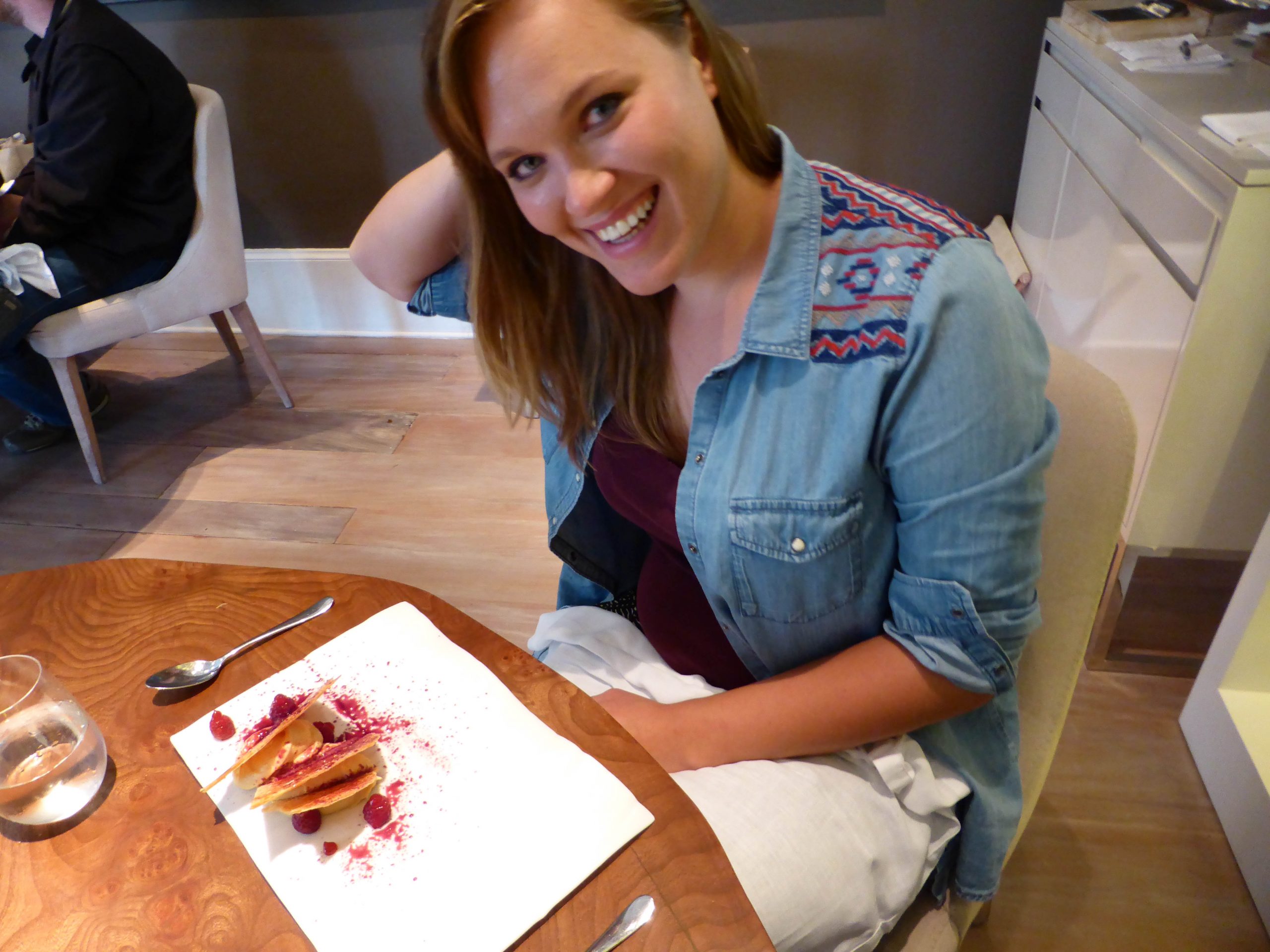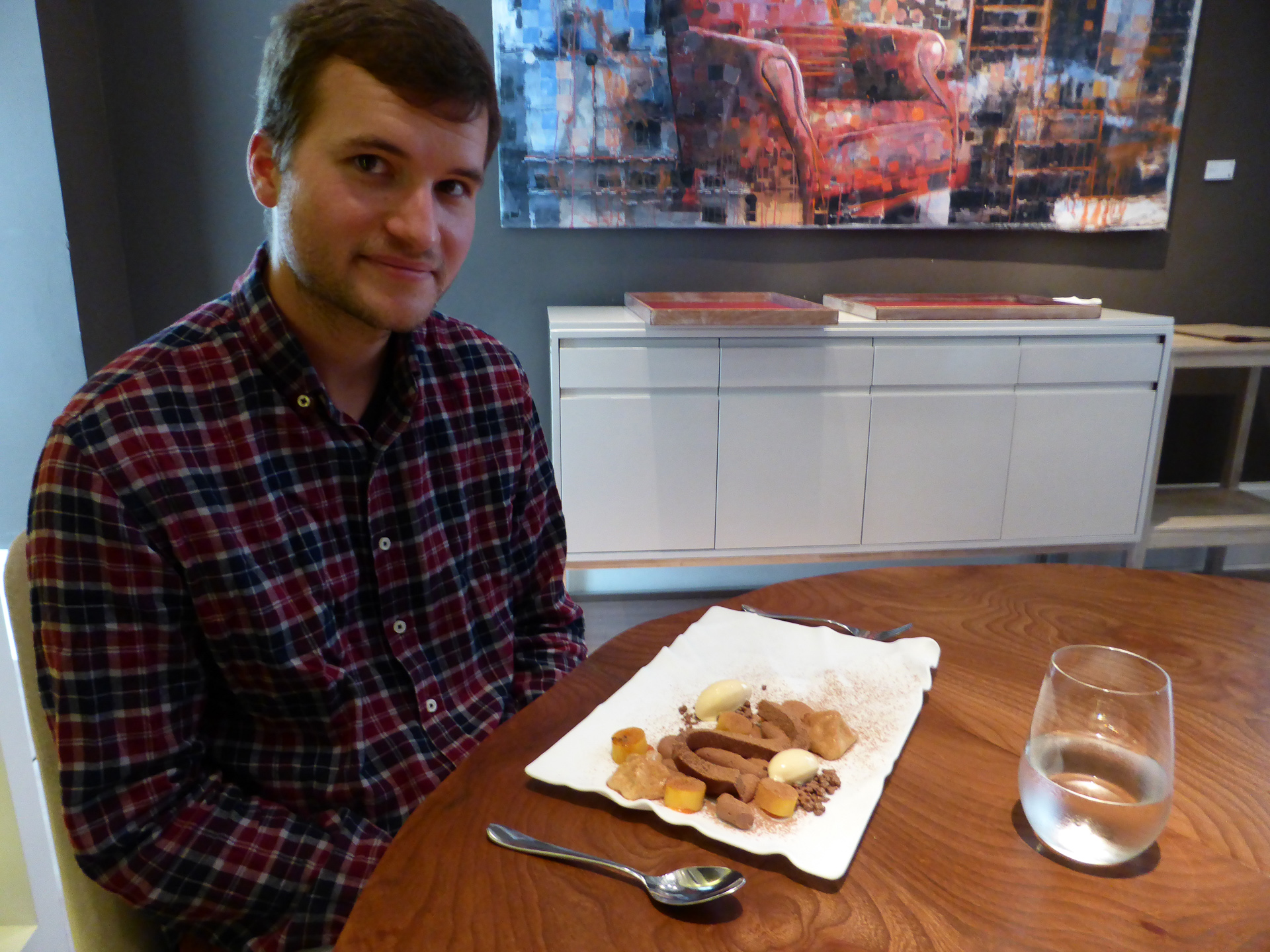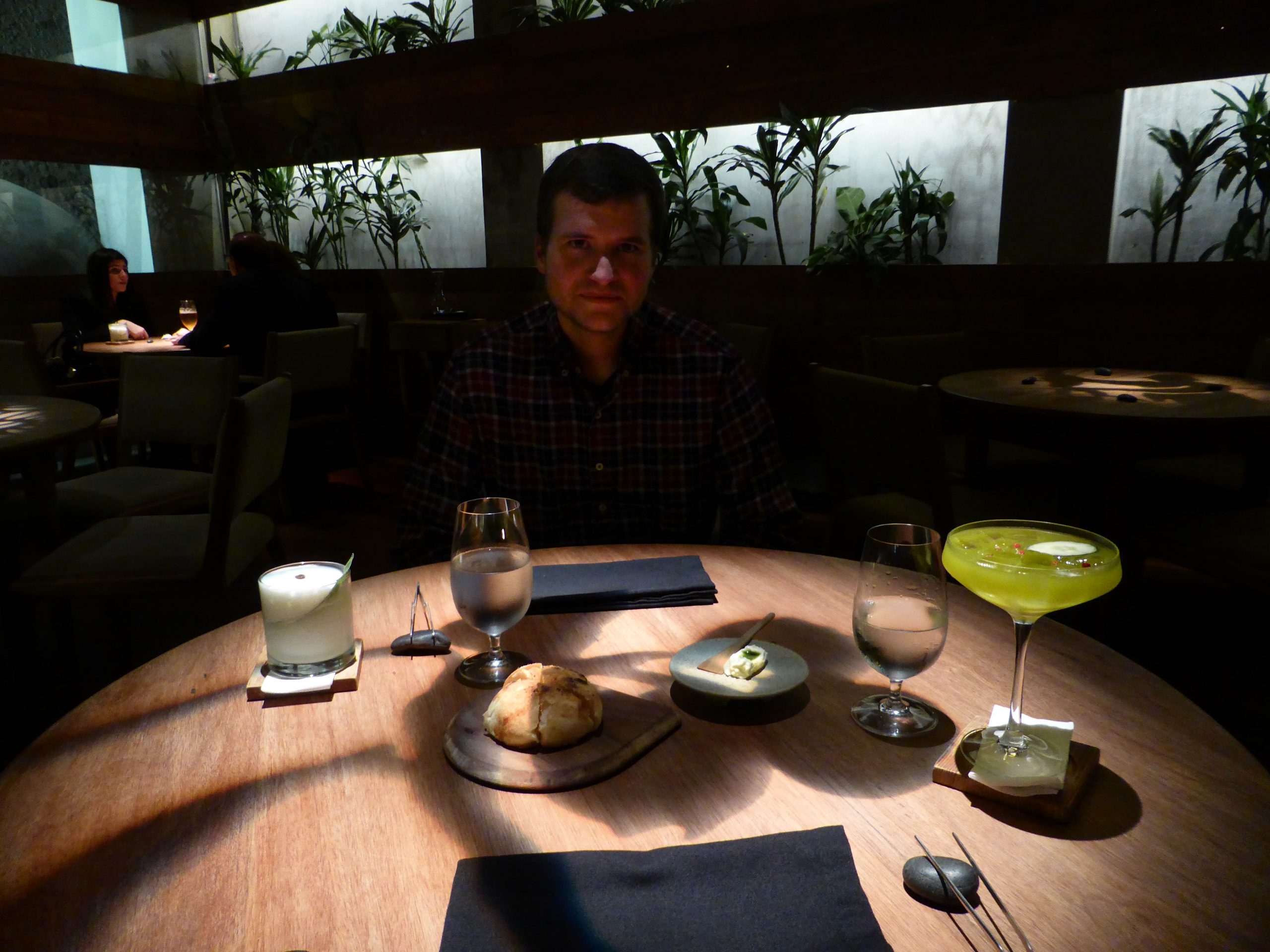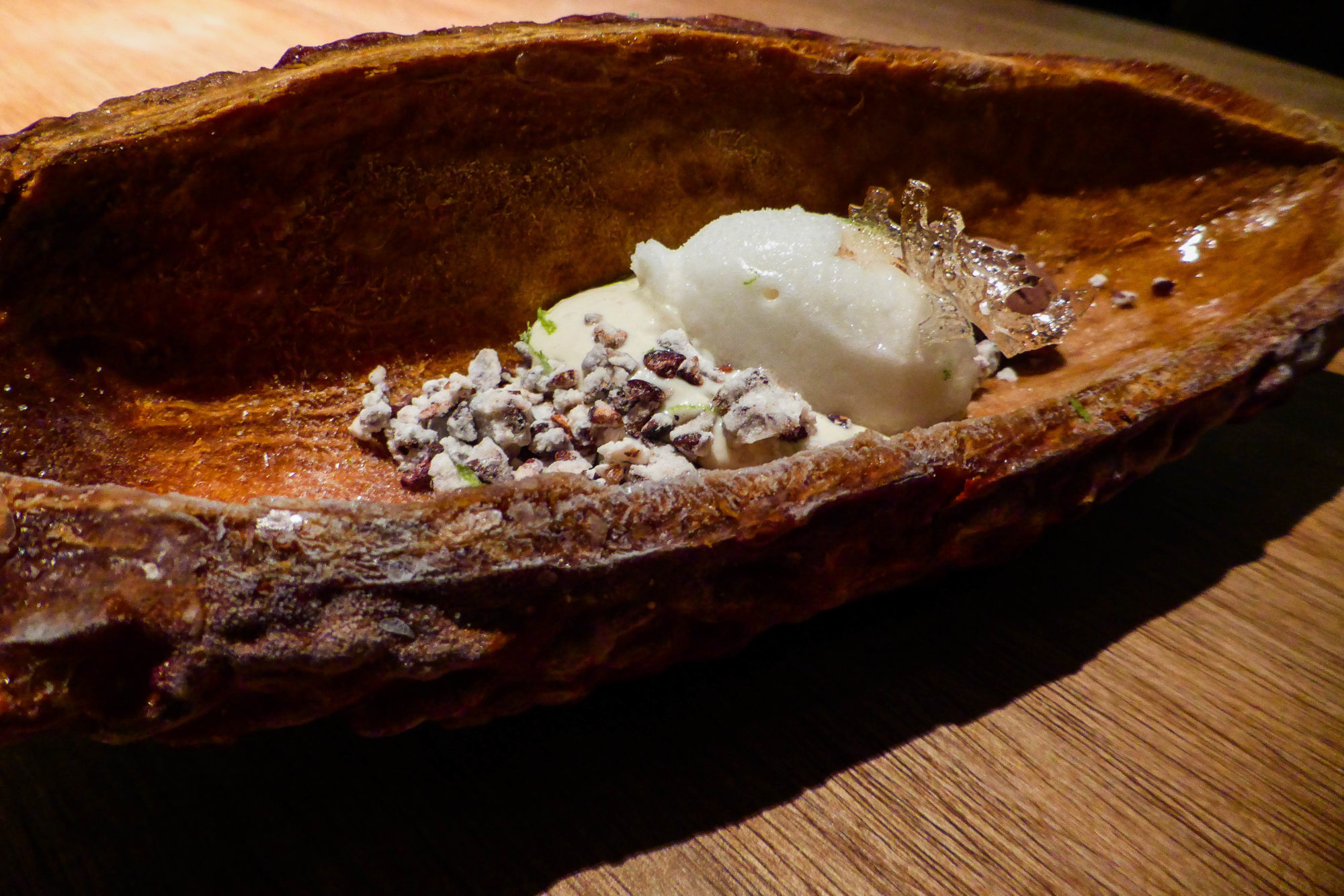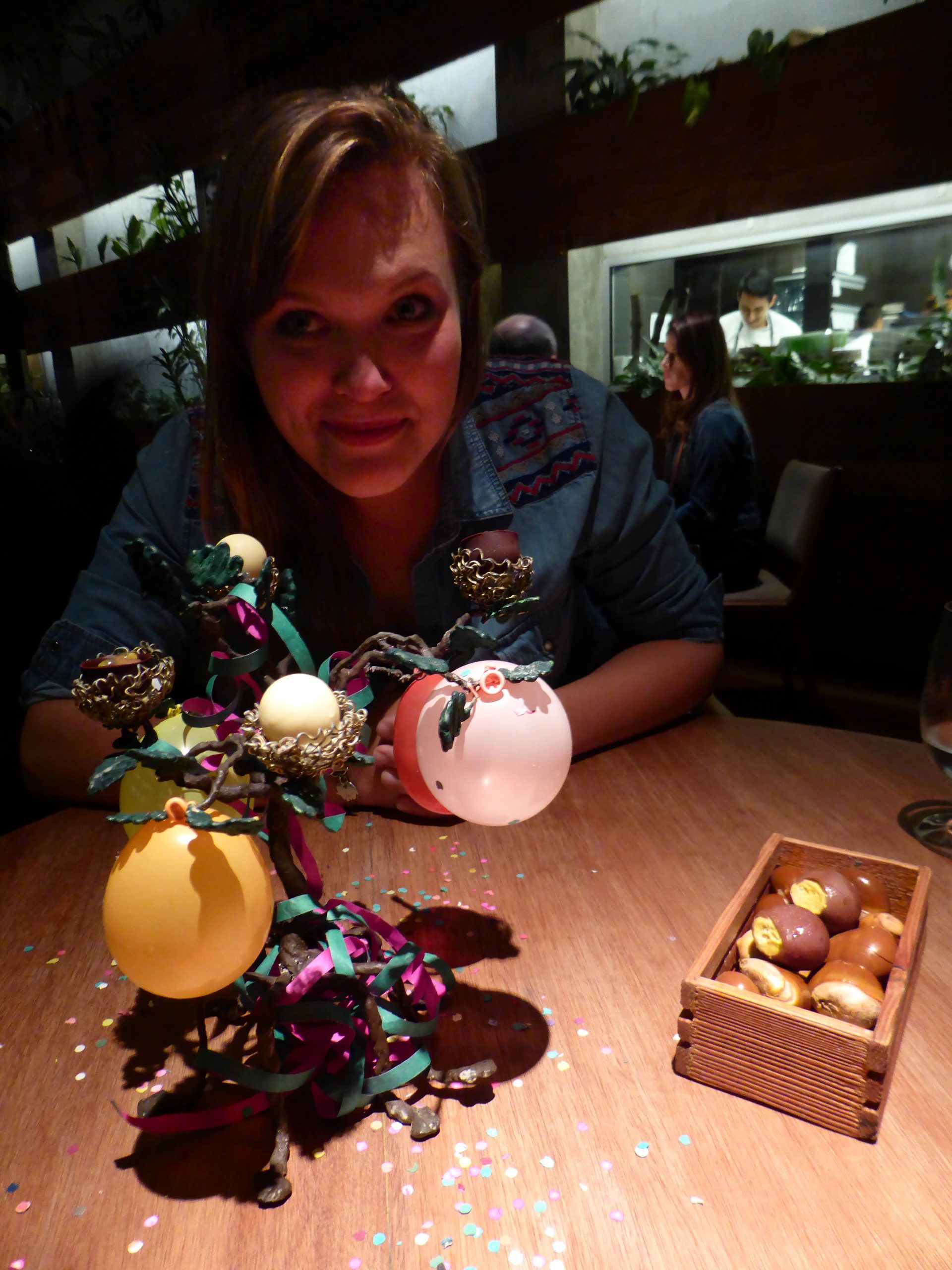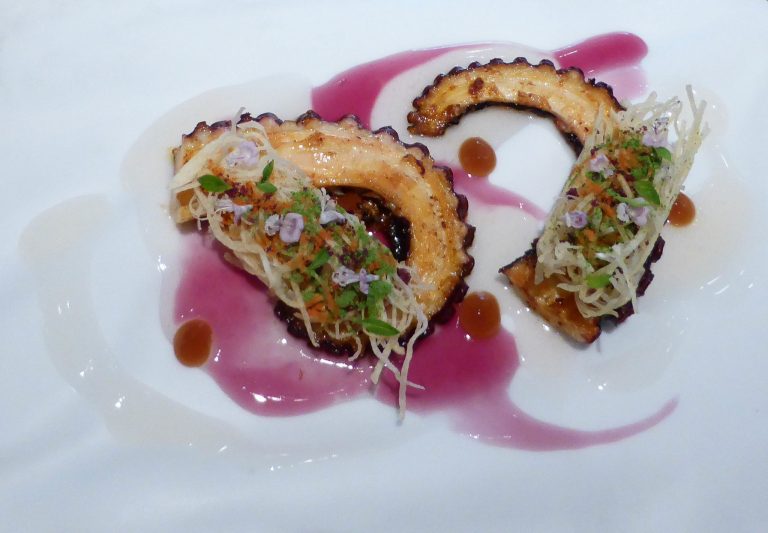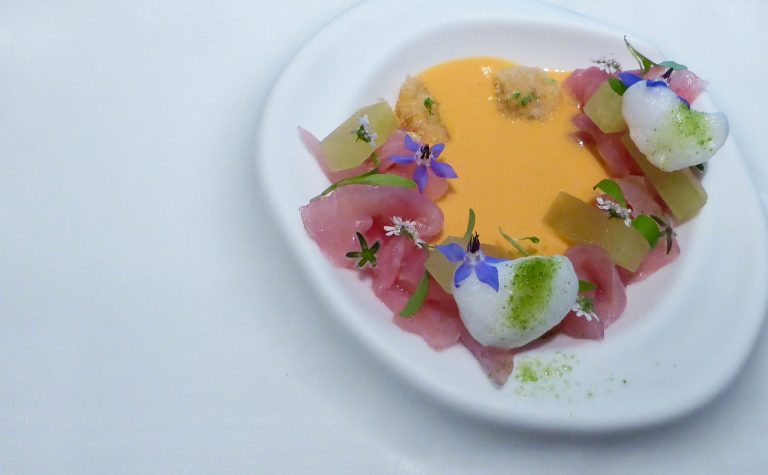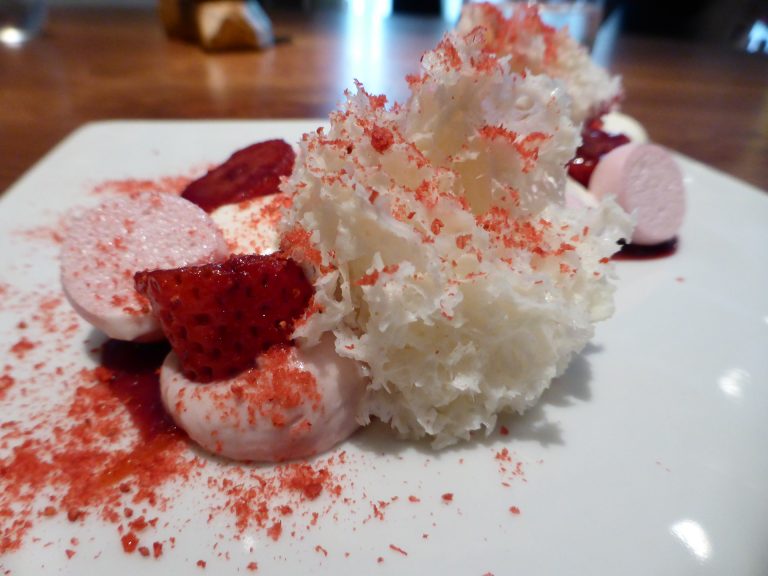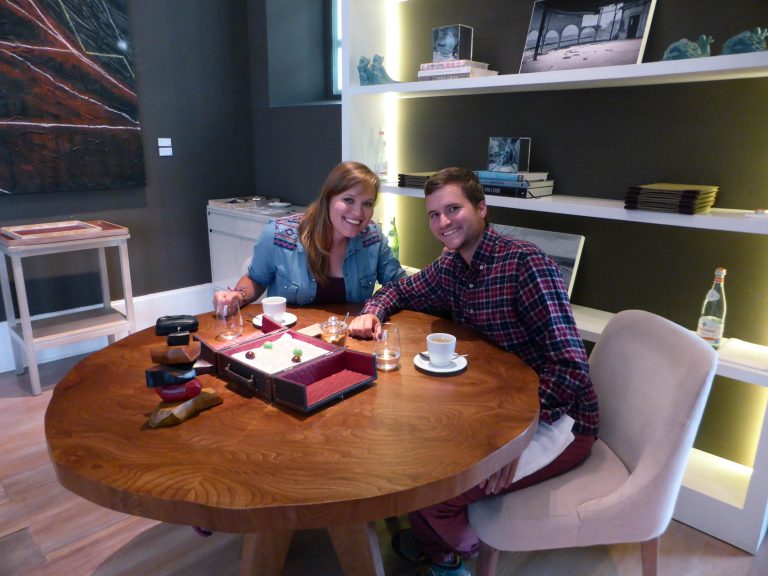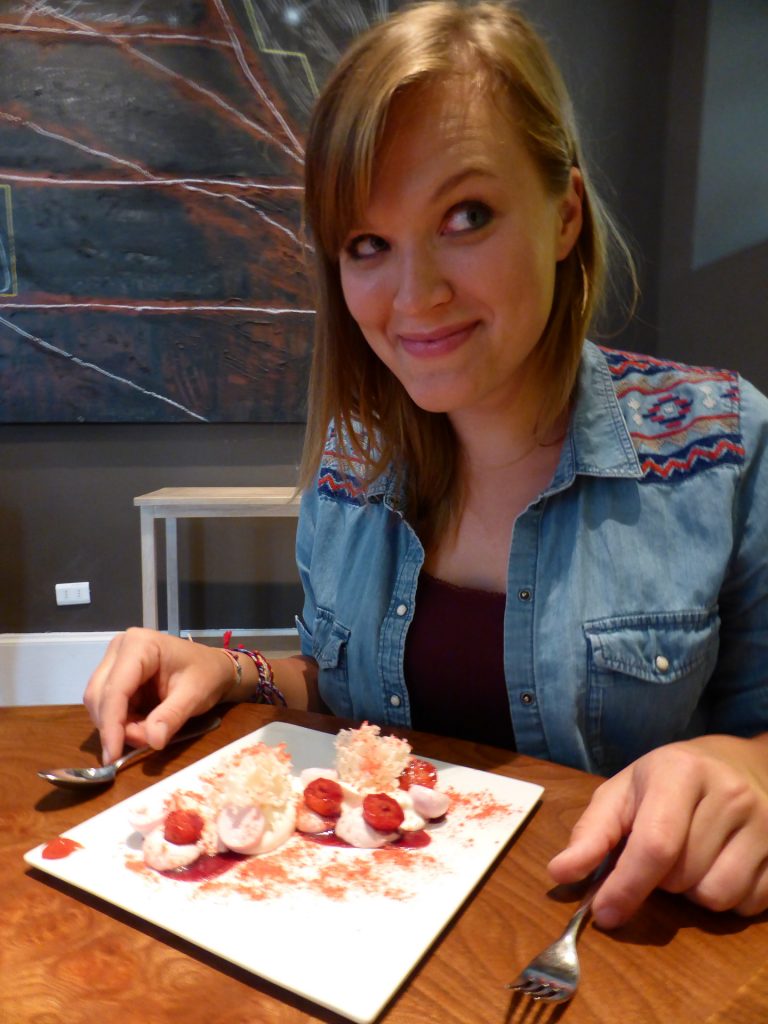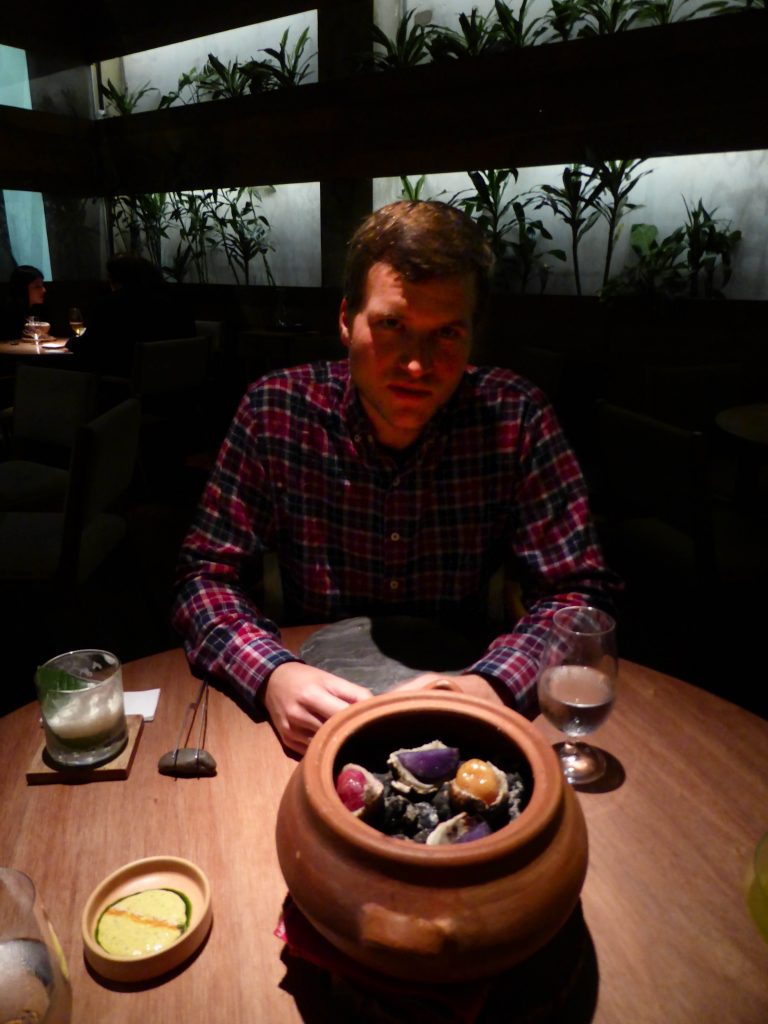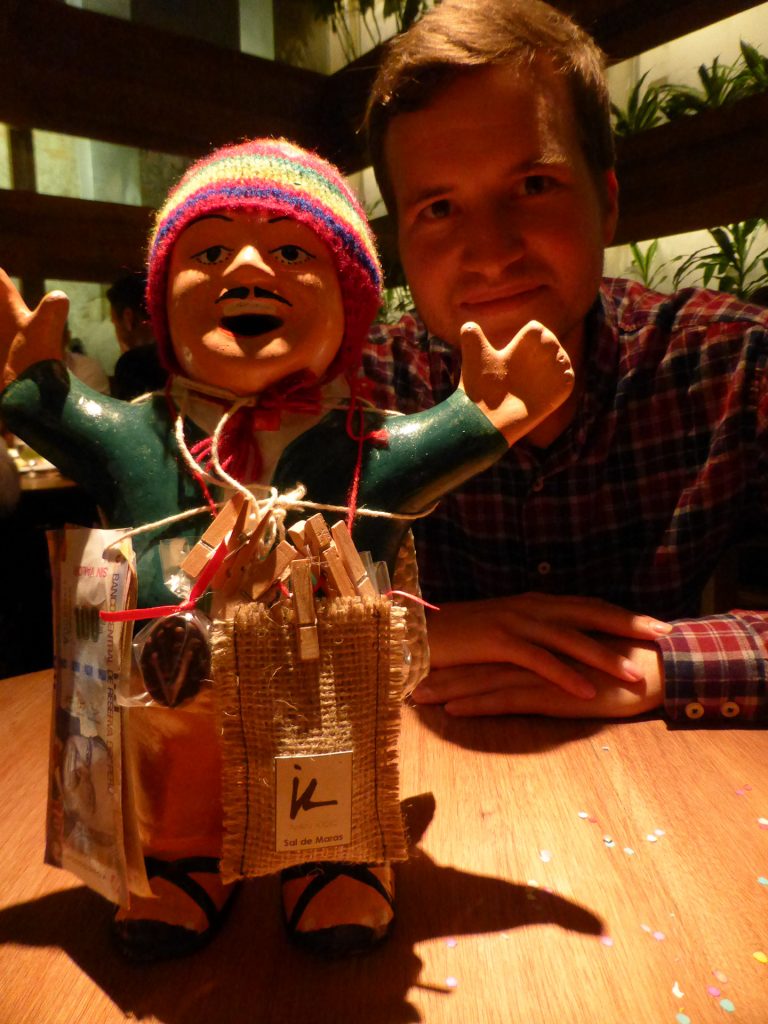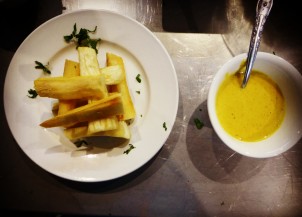For Jandirk Japan has been a dream waiting to happen. He loves manga, Japanese food, origami and Studio Ghibli. For me it was a brand new destination on my bucket list. A few years ago I didn’t even want to go to Japan. In my mind it was a futuristic country without proper culture and with plenty of cold people… ow boy was I wrong…
Flying from Sri Lanka to Japan we knew we were in for a big shock but nothing could prepare us for what was coming. We landed in Osaka where we met our Japanese friend Juri, that we became friends with back in Panama. She offered us the most incredible experience we could ever ask for. We stayed at her grandmother’s house! 🙂 Juri and her family were just so warm and open for us. Her grandma talked to us all the time 🙂 It was all in Japanese but sometimes we could really understand her and her smile was just warming our hearts. On the other hand the homemade food was warming our stomachs. Most associate Japan with sushi and maybe sashimi but it’s not just raw food. There are varieties of soups, fermented beans and dried ingredients. As weird as they sometimes sound (dried fish with sesame seeds as a snack) they are delicious, full of flavor and mild. Such a relief to our stomachs after spicy curries on Sri Lanka.
Then the technology struck us. First visit to the toilet and we were charmed. Warmed toilet seat, built in bidet and even relaxing sounds in public toilets were inventions that surprised us. Those were not the only ones. When the evening came it turned out that the Japanese like to relax and take a bath rather than a fast shower. We literally dived into the bathtub which turned out to be way deeper than the ones we have in Europe. If we have them… Here even those can be really brought to another level, computer pouring the exact amount of water, bringing it to the right temperature and keeping it that way… Traditional but yet so futuristic and modern.
What is better after a good, warm bath than a long comfortable sleep, right? We were a bit anxious we wouldn’t be able to achieve that as we were about to sleep on a tatami floor so essentially many straw mats put on top of each other. On top of that we put a futon which is a Japanese style, very thin mattress. And voila a beautiful and potentially very uncomfortable bed is ready! We fell asleep immediately and we slept just great.
Then we got to see the city with Juri. Strolling through the streets we were surprised by how modern but not western they were. How the people took their time in everything they did and how everything was just done to the best of their abilities. There was just perfection everywhere we looked. Walking between blossoming plum trees in the park next to the Osaka Castle we met a lovely old man who sketched a little map including every plum tree from the park. All that to visit the trees, write down how they blossom, when and for how long. He has been doing that for many, many years. There was just so much love and passion in his story and in the way he spoke about it. We felt enchanted but also sad… Because in Japan it’s hard to talk to people unless you speak Japanese and we knew Juri wouldn’t travel with us forever.
There is no way I could write about any Japanese city and skip the food and street life. In Osaka it’s absolutely essential. There is nothing better than to stroll through the Dotonbori District in the evening surrounded by neons and crowds. Every cafeteria and bar looked cozy, spectacular and inviting. Every shop had a beautiful display. I thought plastic food on display would be off putting. Here it just looked realistic and mouthwatering. Every restaurant showcased what they had on the menu so I think the fake dishes were actually made to order and customized. Sometimes we really had to look closer to see if it was the real deal or a great imitation.
Juri took us out with her friend and made us realize how different everything seemed. We thought we knew what karaoke was. People getting drunk singing their hearts out to more or less pleased public at the last call of the night. Not in Japan. Here you go with your friends, you rent a room in a kind of entertainment center you sit down on a couch like if you were home and then it starts. There is nothing uncomfortable about it, you sing and have fun with the people you know and like. You don’t have to be drunk either and it doesn’t even have to be the middle of the night. We went at 5 pm with our green tea and soft ice cream we sang our souls out to the western hits and even Disney songs.
Although normally we don’t go to zoos/aquariums we decided to do an exception for Osaka. We didn’t regret it for a minute. Osaka aquarium was massive and except for the usual we also saw a whale sharks and an incredible selection of jelly fish. Something we could have never seen diving. Or better we would prefer not to see them diving as many are just really dangerous.
In Osaka we felt we were off for a great start of what could be the best part of our journey so far. So a bit sad but excited we were off to Kyoto.
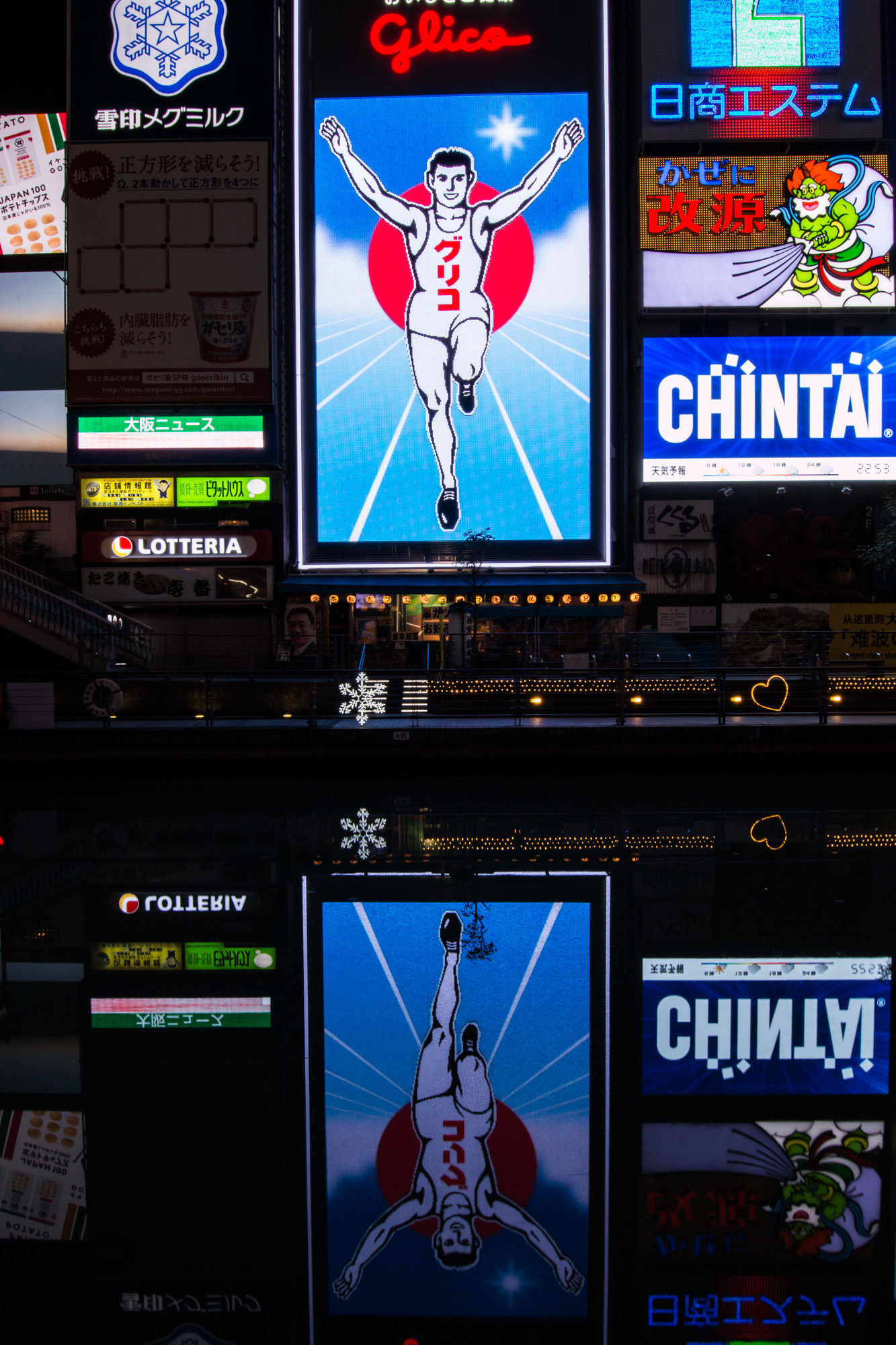
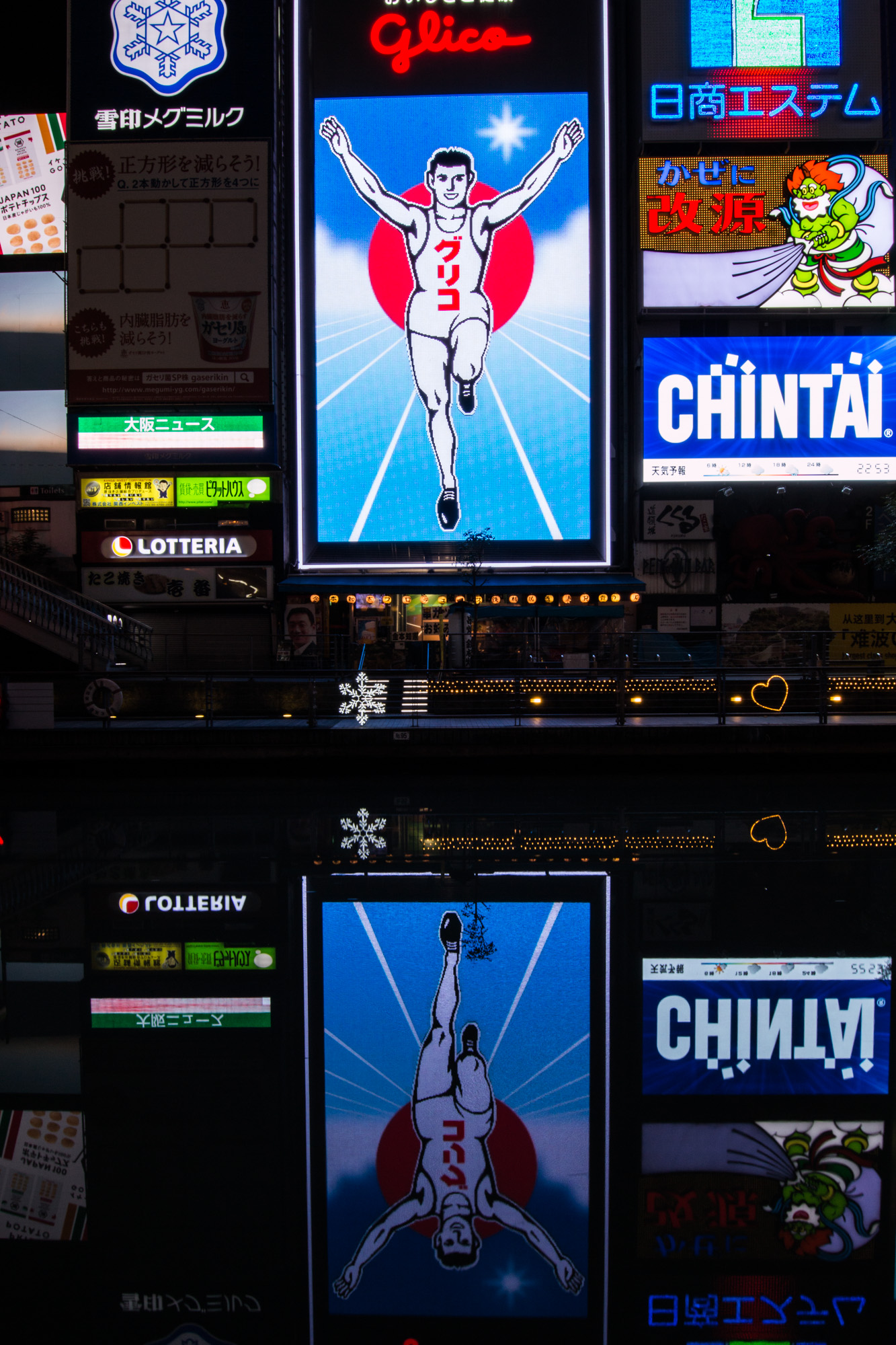
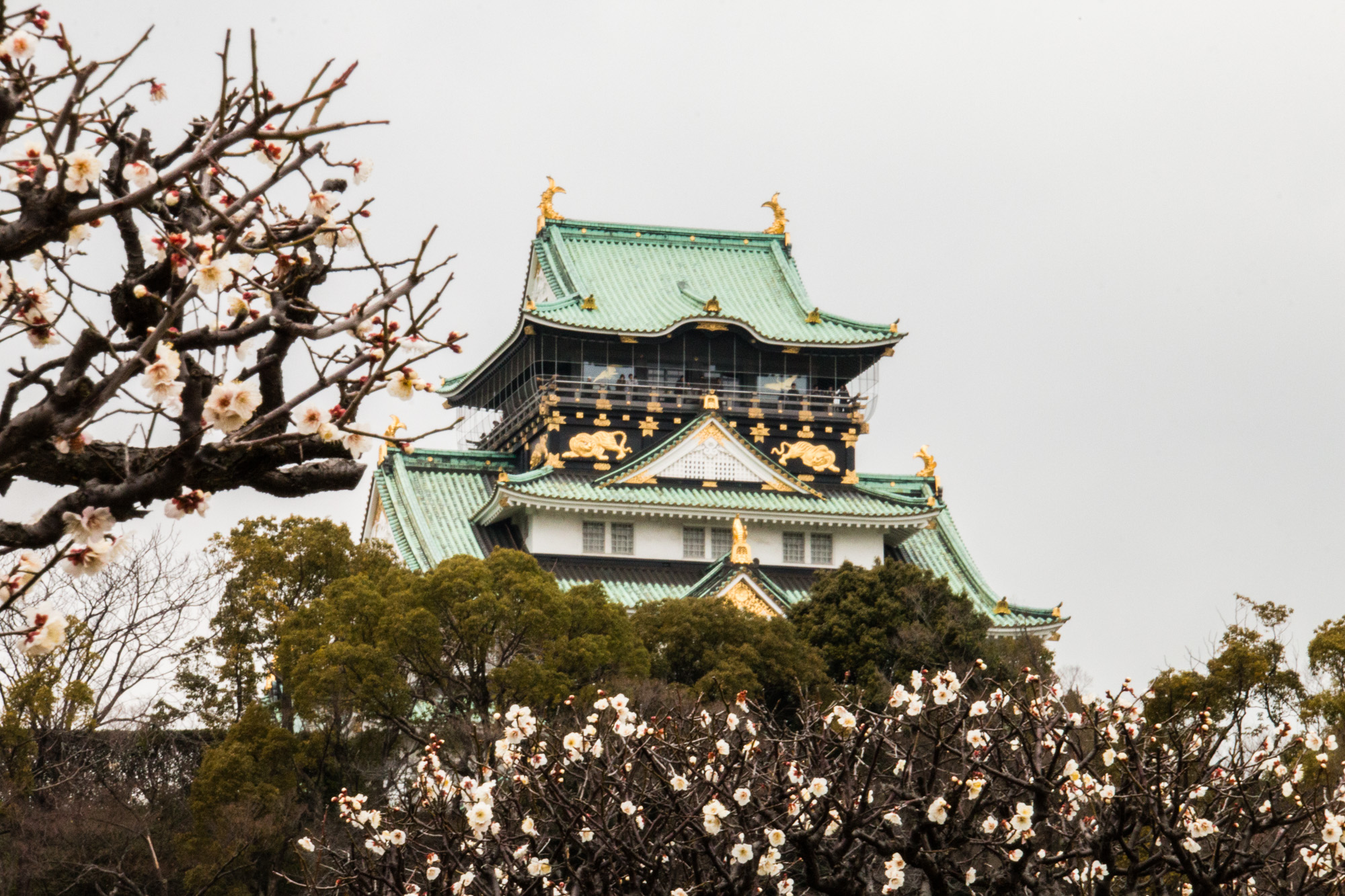
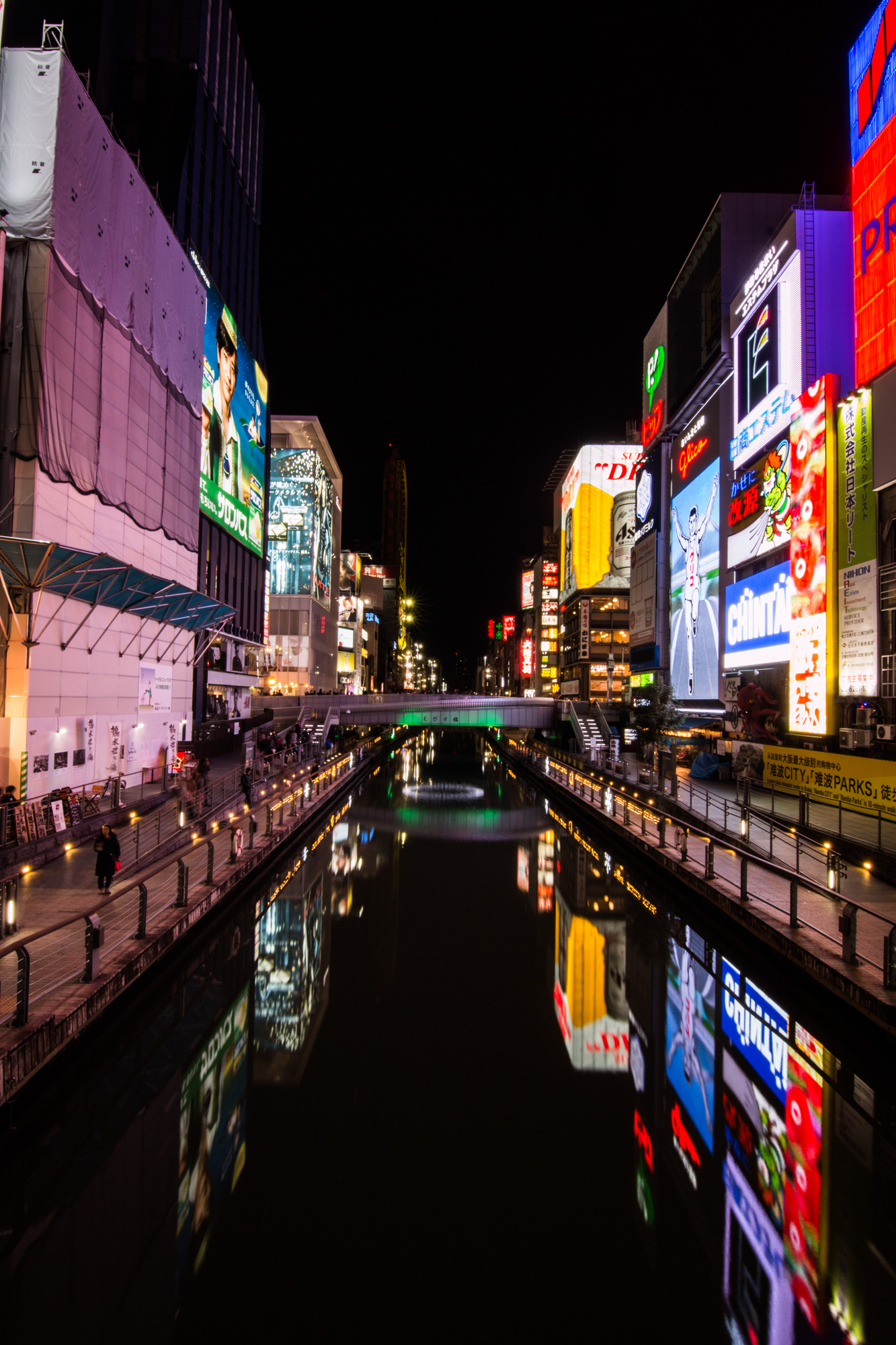
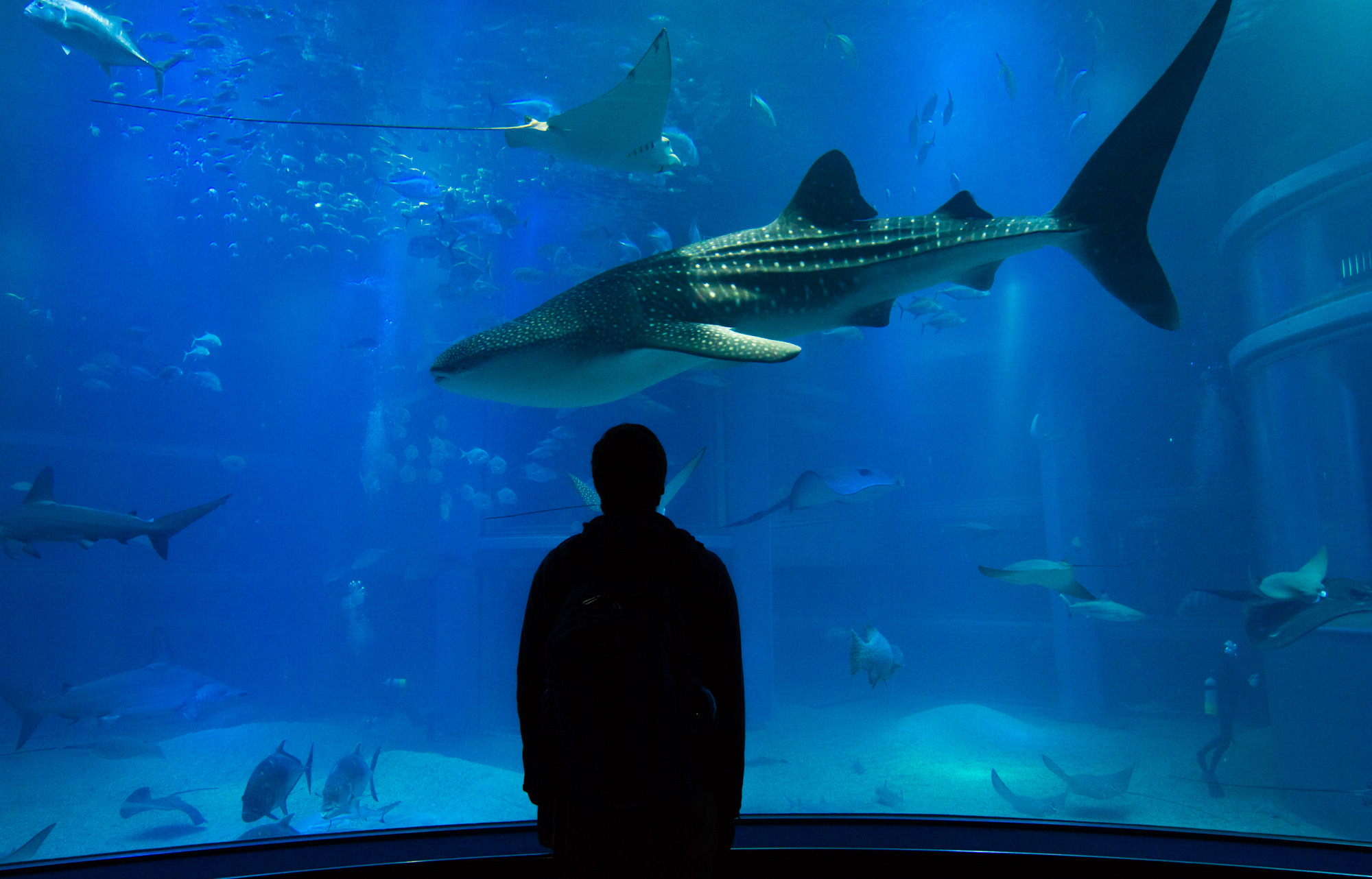
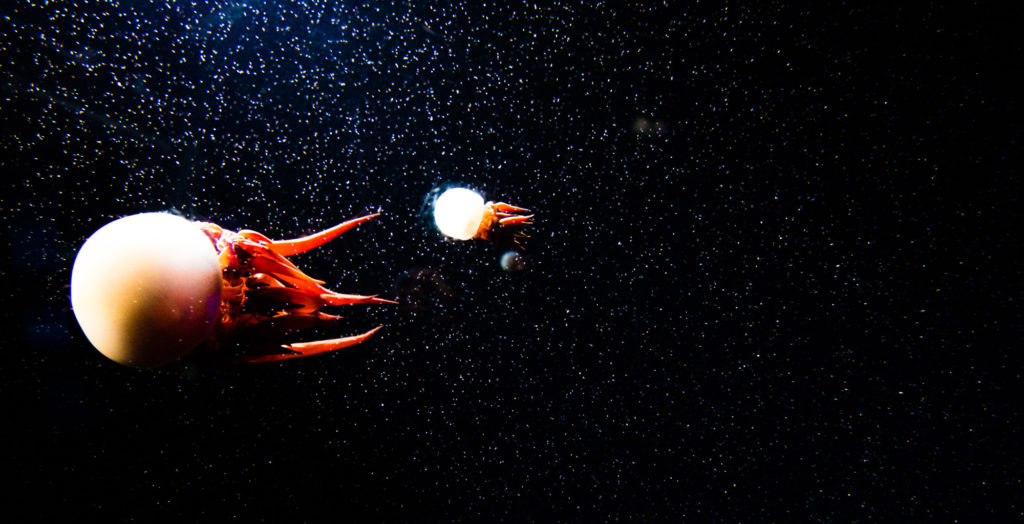
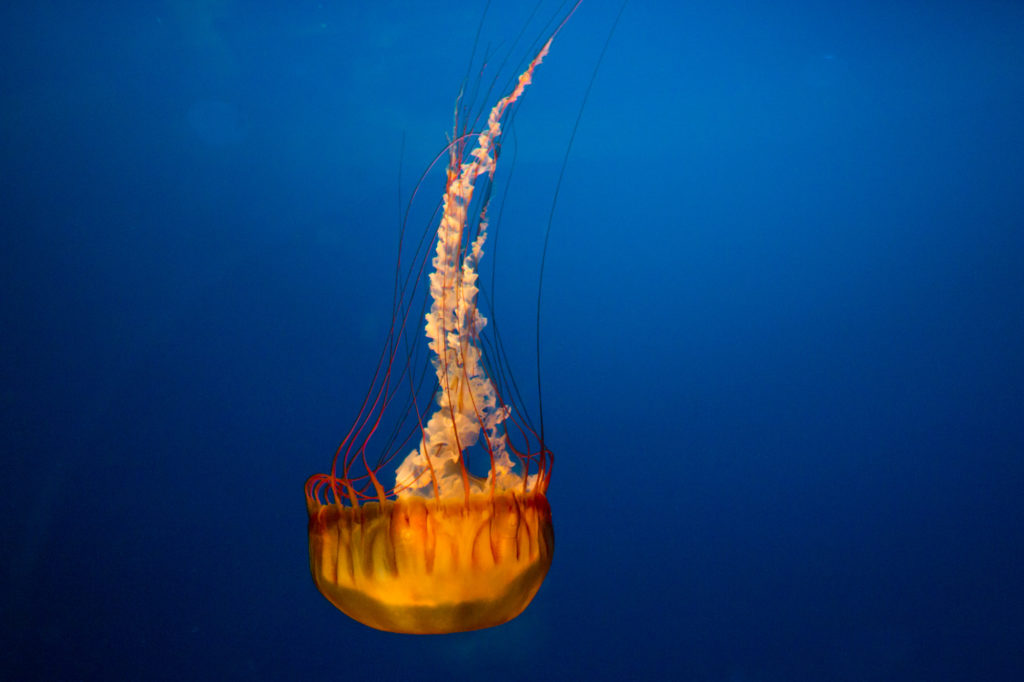
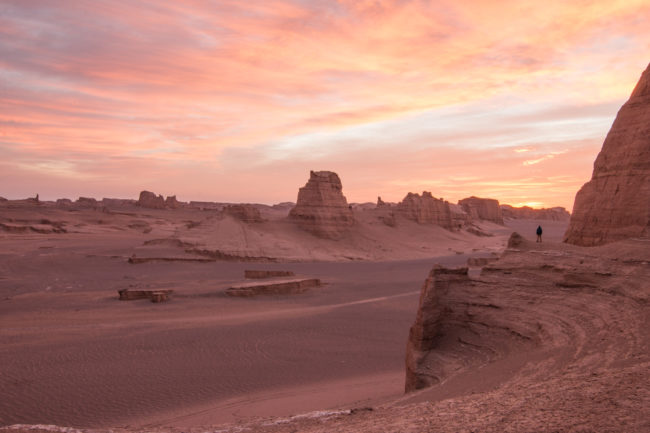
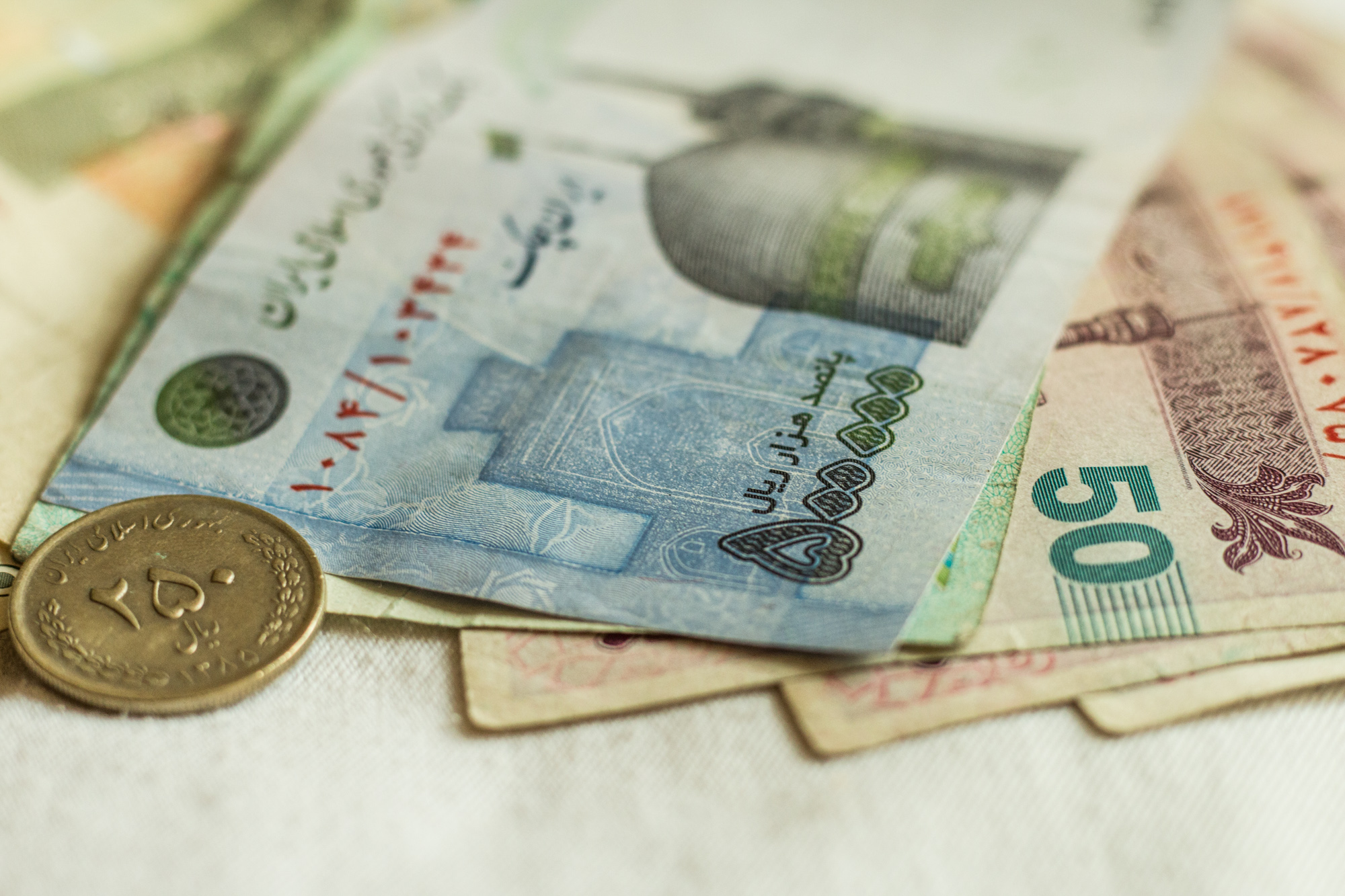
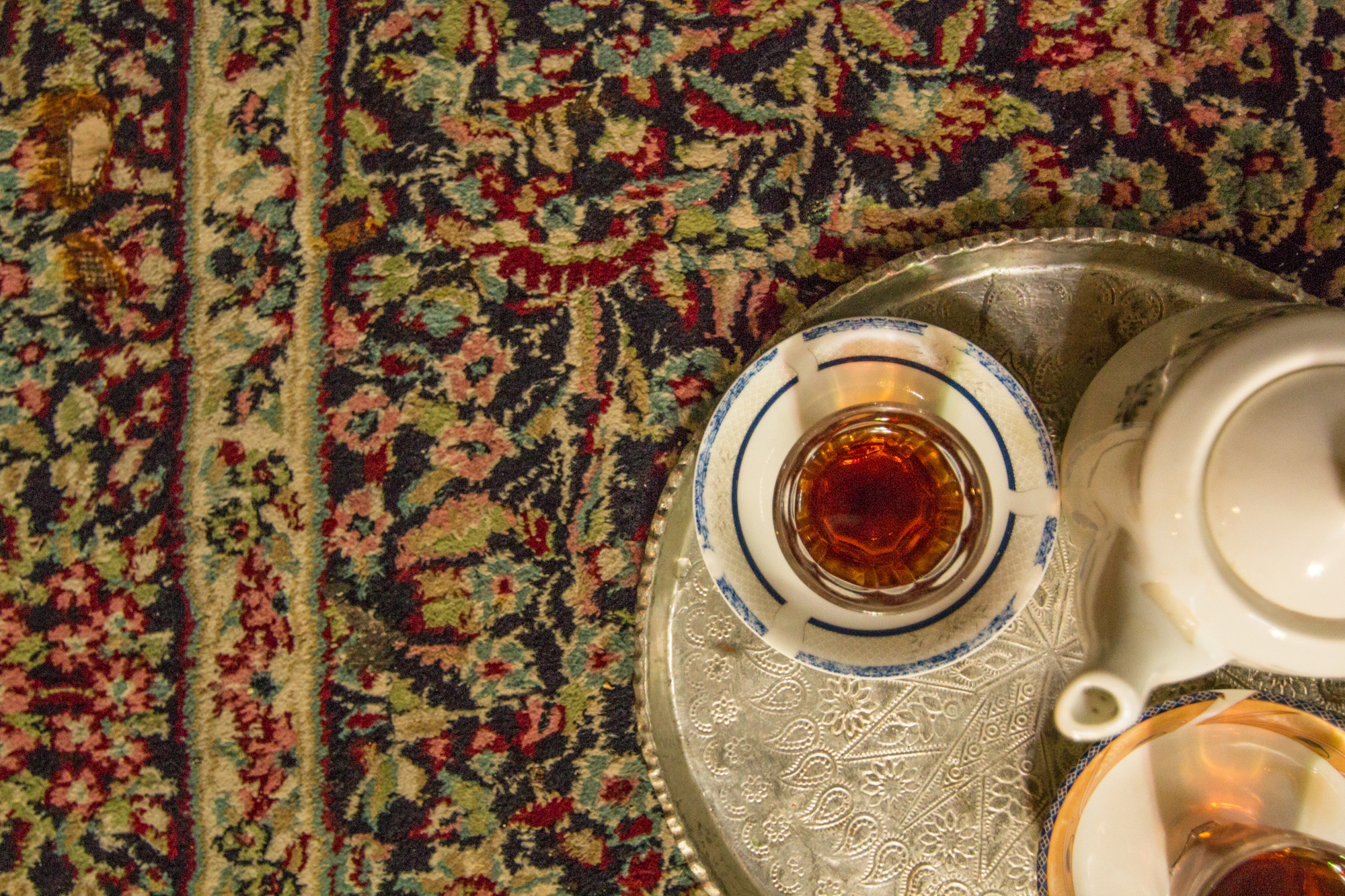
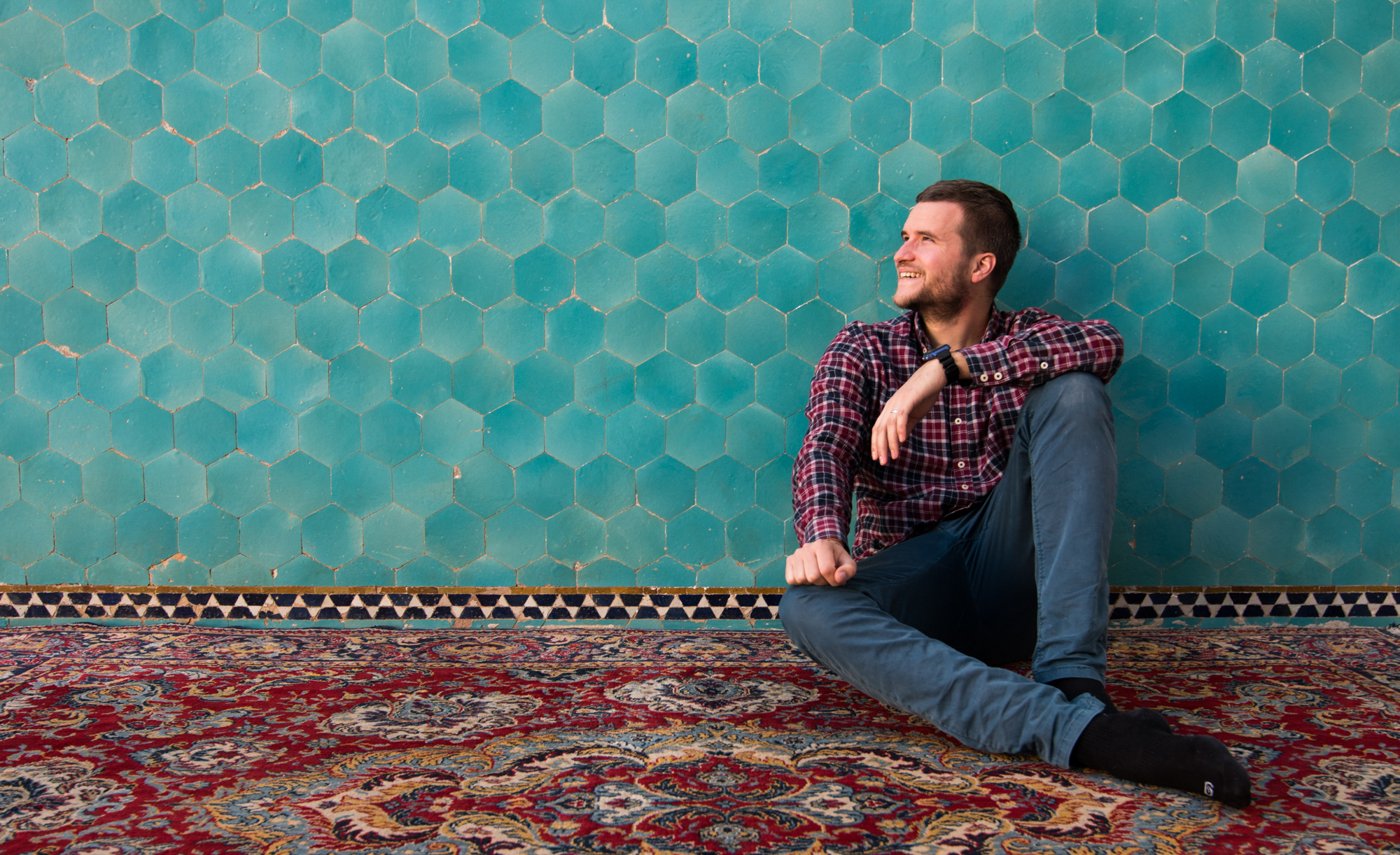
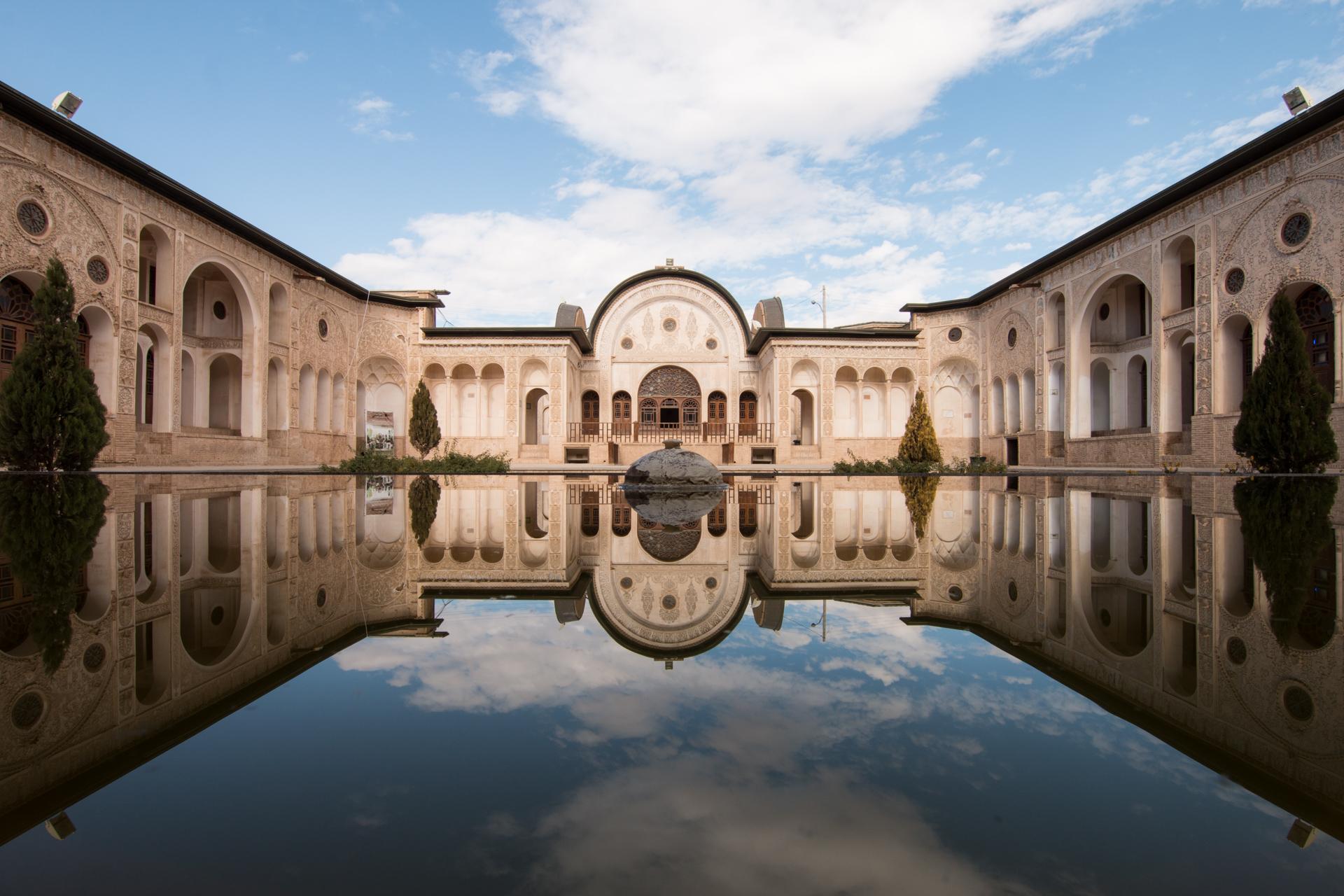

 There were bags with content flying everywhere. Even a special vomit master appeared to take care of the content and make sure new bags were ready so that no other passenger was endangered by the flying liquids. And like that for 4h. All worth it. The island was what I had in mind thinking about paradise. Unbelievable sea, shades of blue, food, architecture and polish vodka on the shelves of the shops (!). Thank god there is even one hostel on the island otherwise we would need to sleep on the beach which could be painful as there are sooooo many crabs walking at night. Actually the island closes their roads twice a year for a crab migration. Basically first they have to close the roads because of black crabs coming from the mountains to lay their eggs and later when the little crabs come out they have to close them again to make sure they can go safely to the mountains.
There were bags with content flying everywhere. Even a special vomit master appeared to take care of the content and make sure new bags were ready so that no other passenger was endangered by the flying liquids. And like that for 4h. All worth it. The island was what I had in mind thinking about paradise. Unbelievable sea, shades of blue, food, architecture and polish vodka on the shelves of the shops (!). Thank god there is even one hostel on the island otherwise we would need to sleep on the beach which could be painful as there are sooooo many crabs walking at night. Actually the island closes their roads twice a year for a crab migration. Basically first they have to close the roads because of black crabs coming from the mountains to lay their eggs and later when the little crabs come out they have to close them again to make sure they can go safely to the mountains.